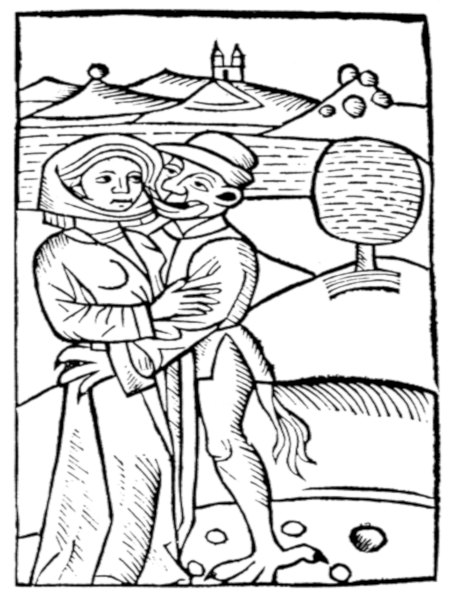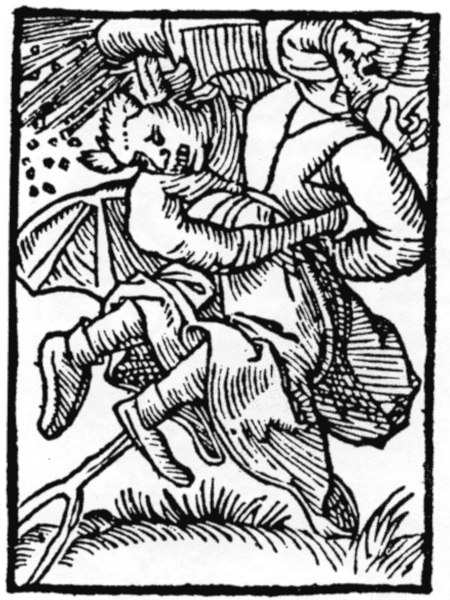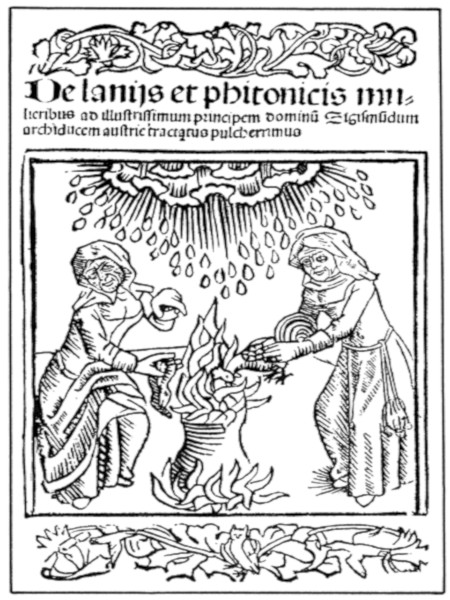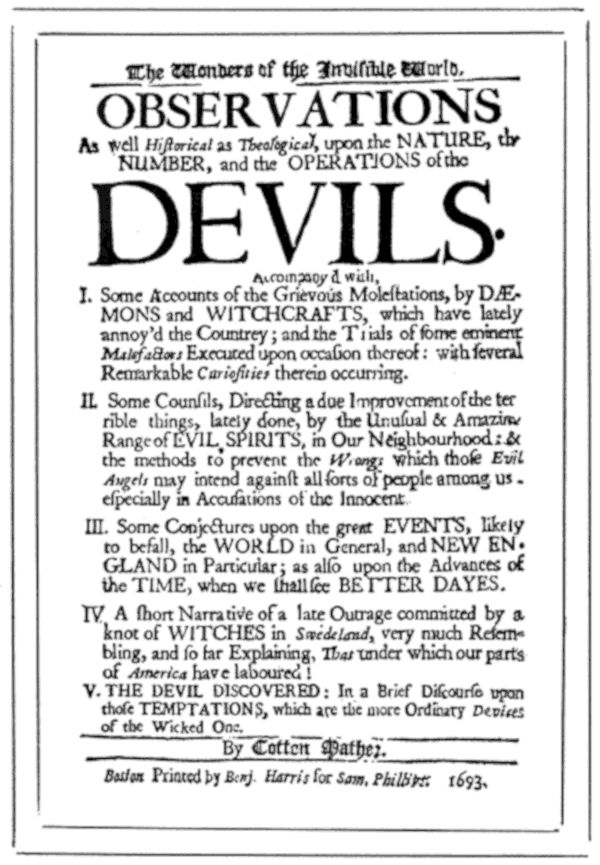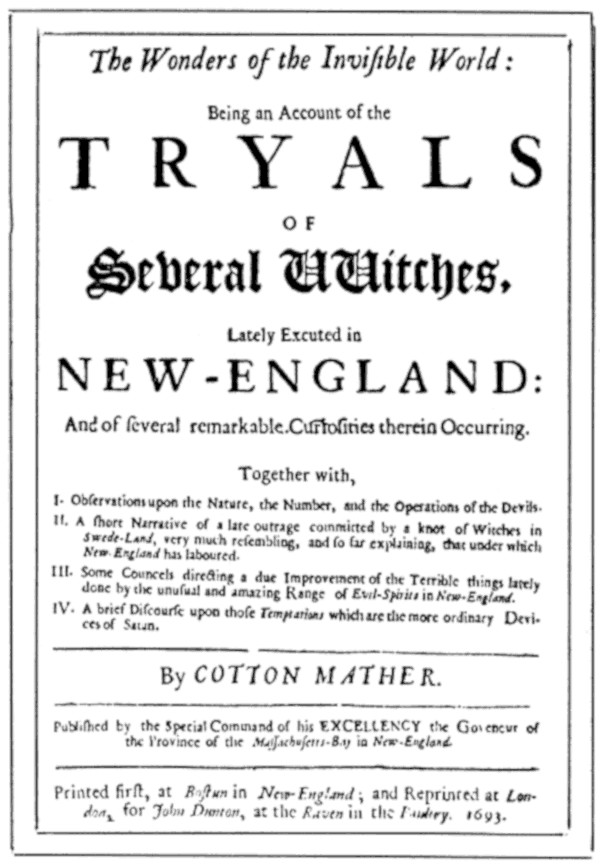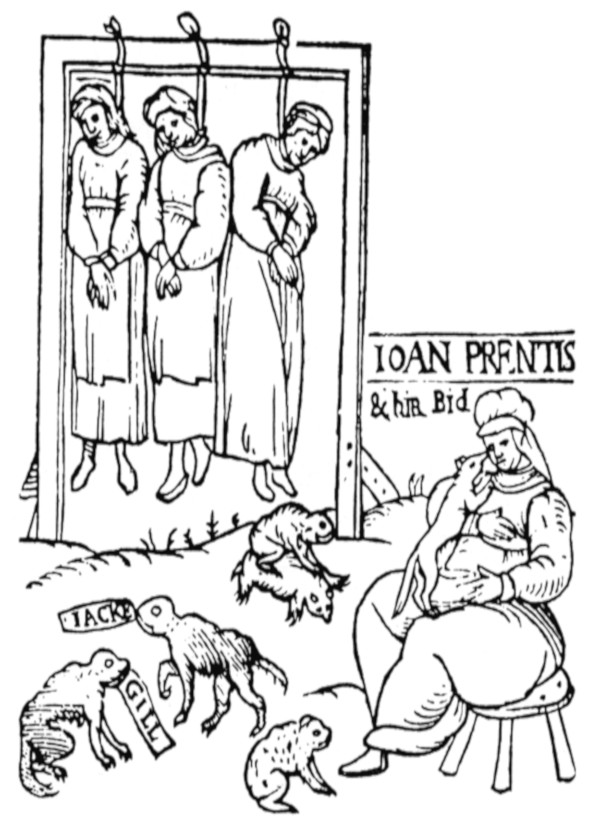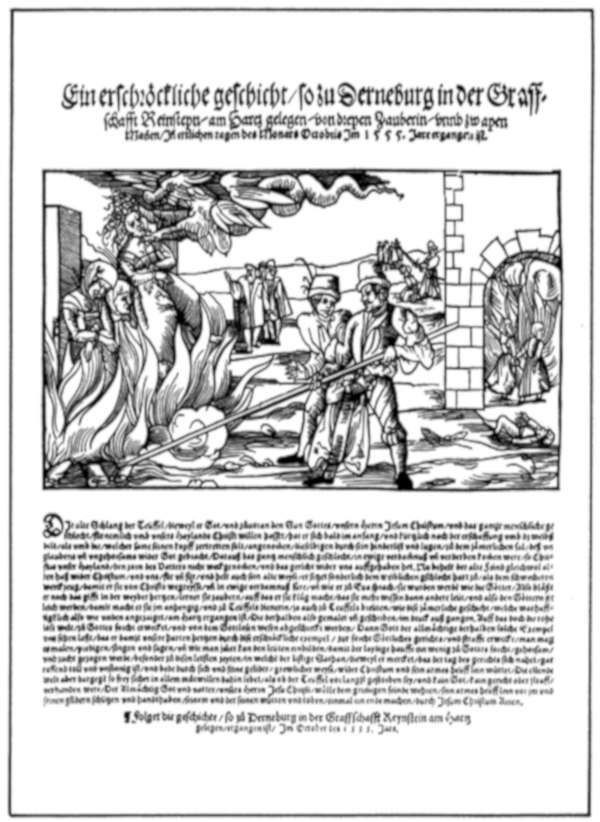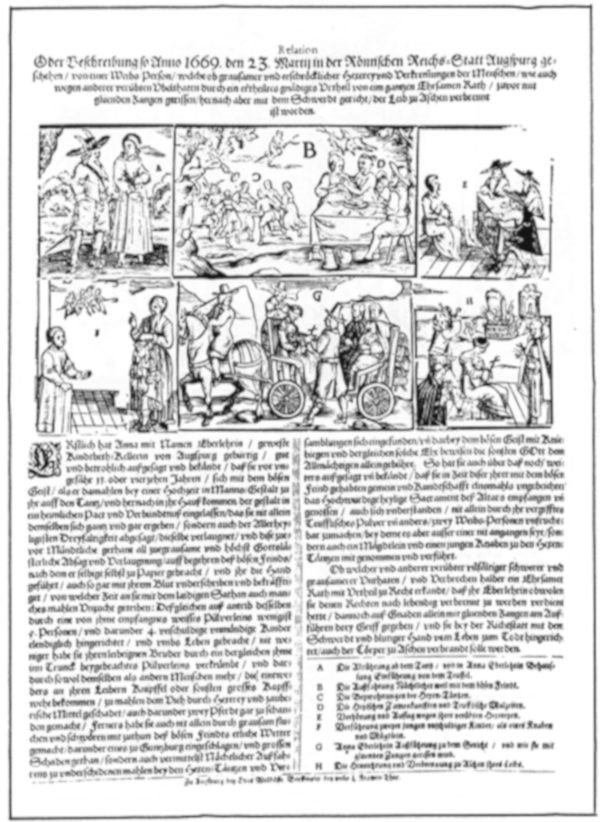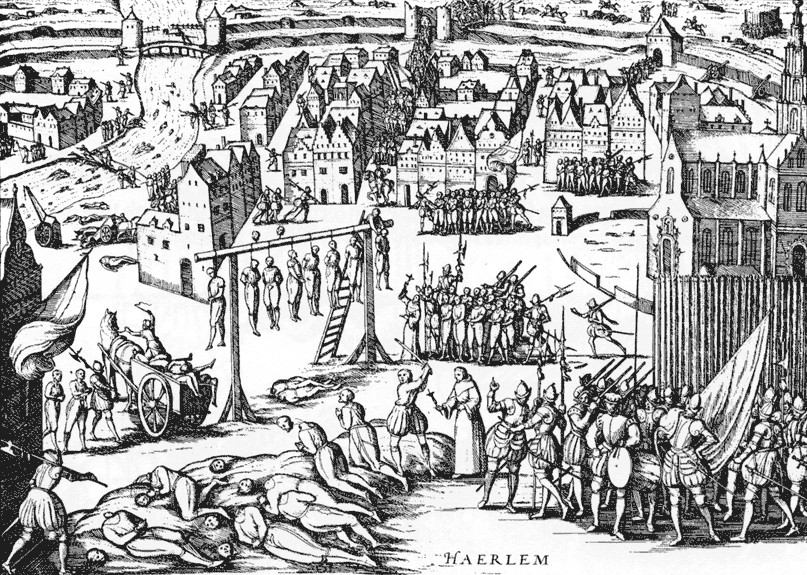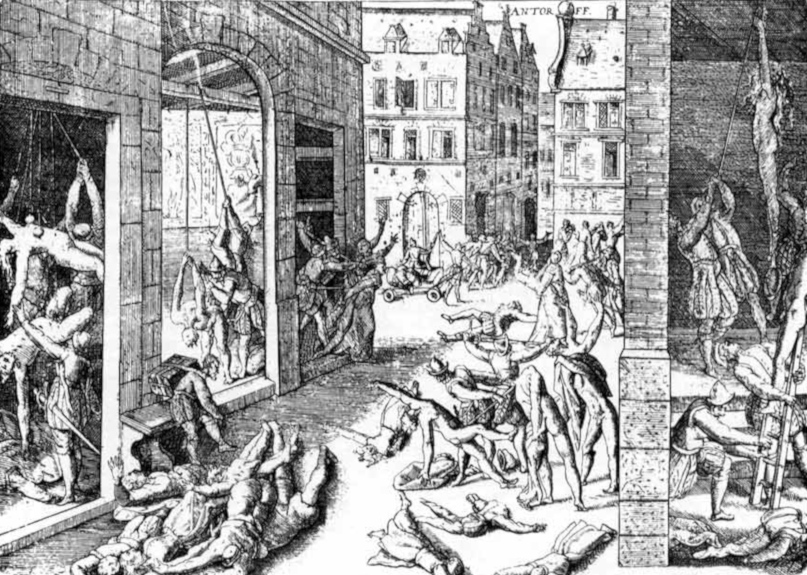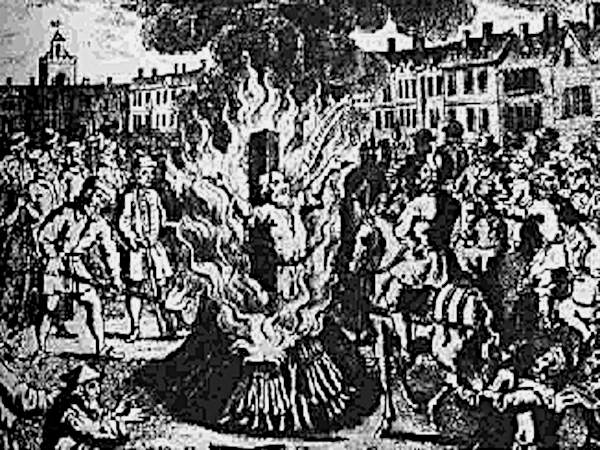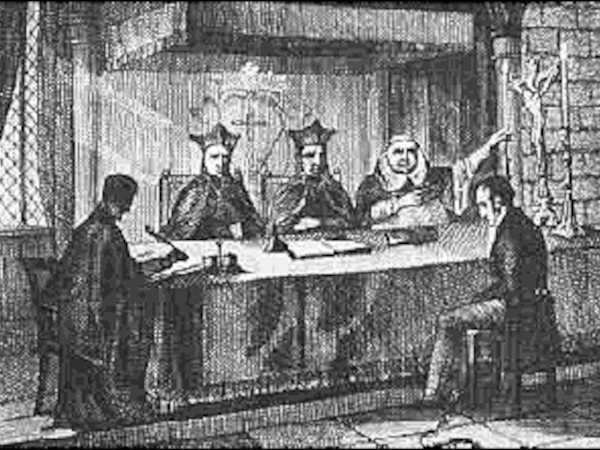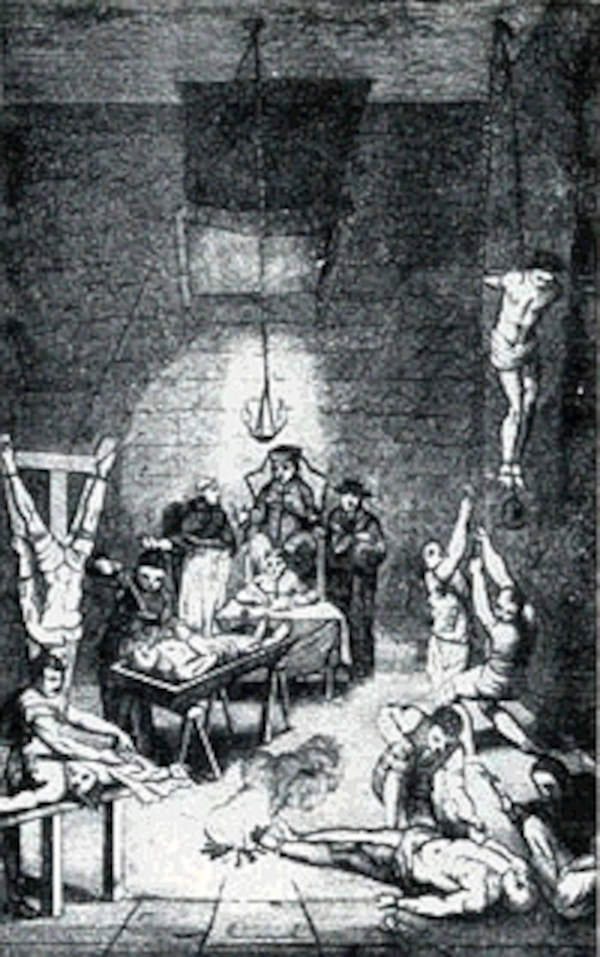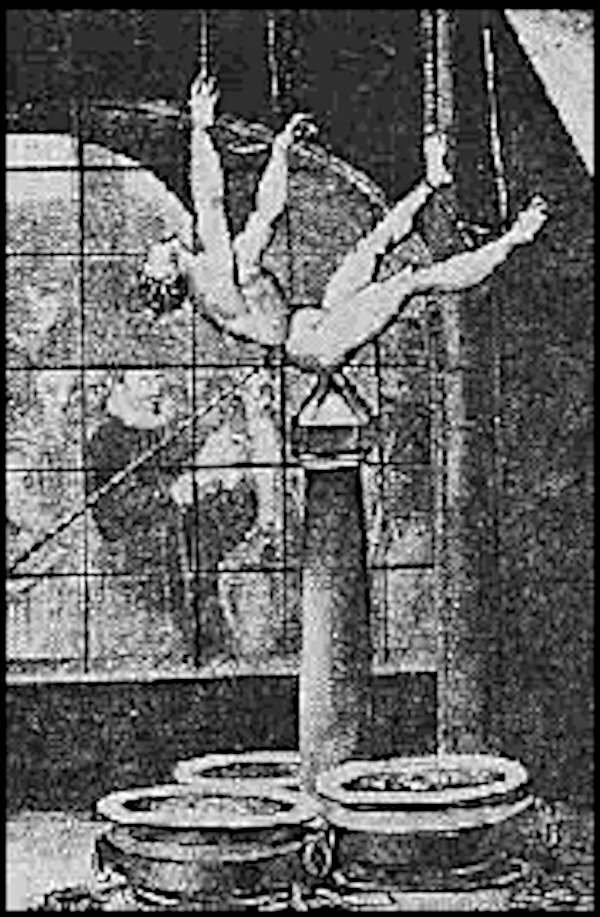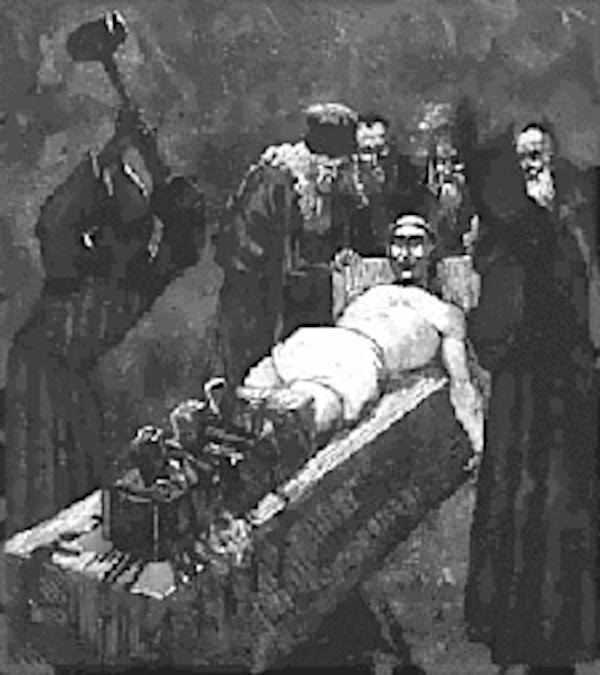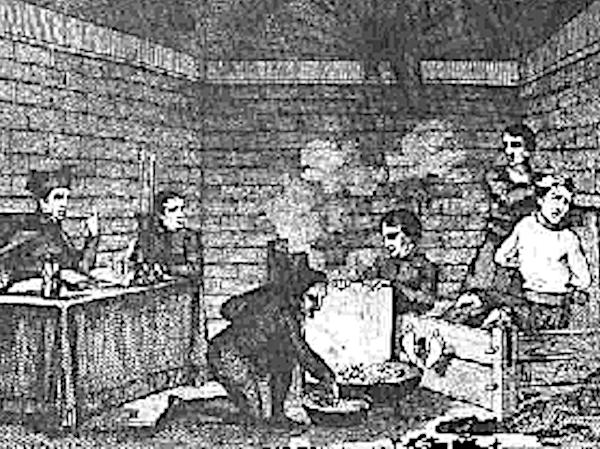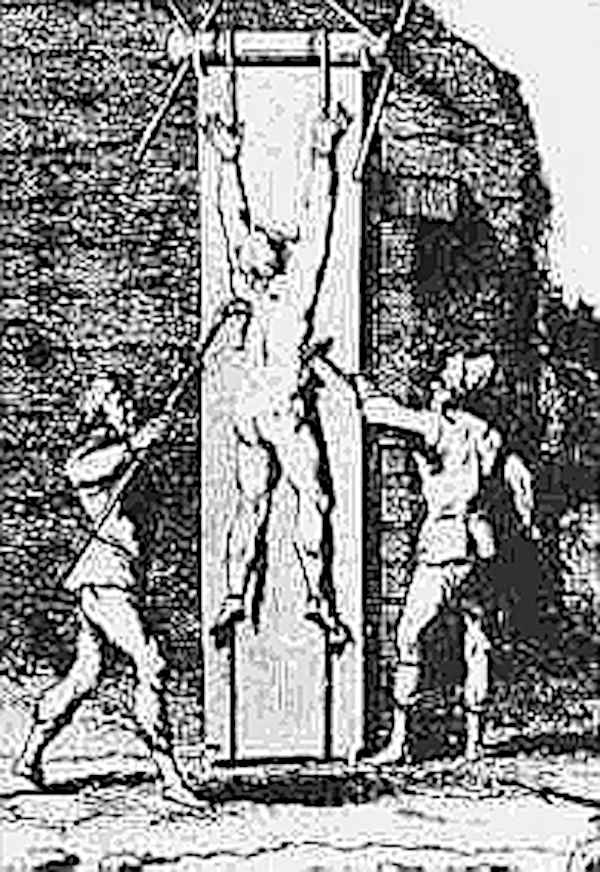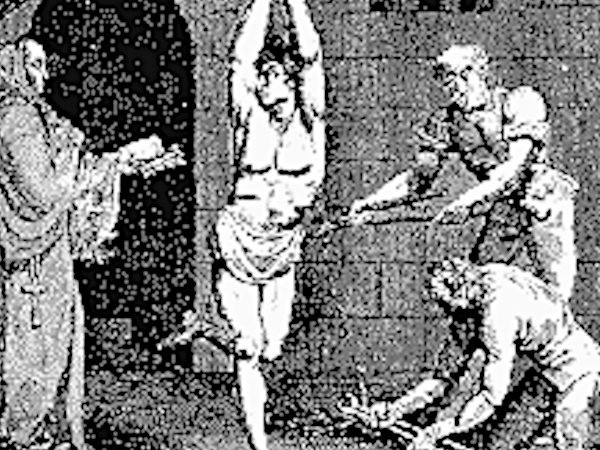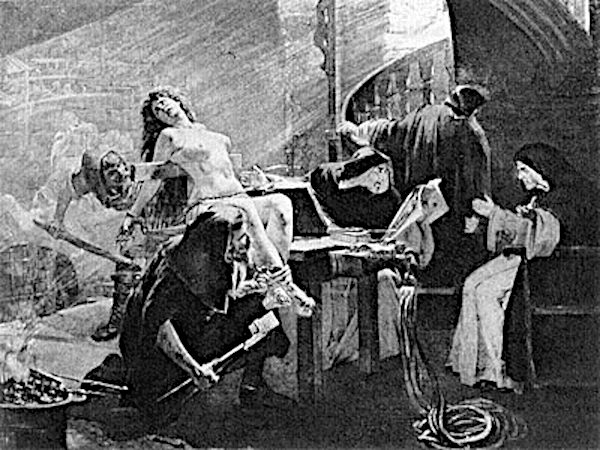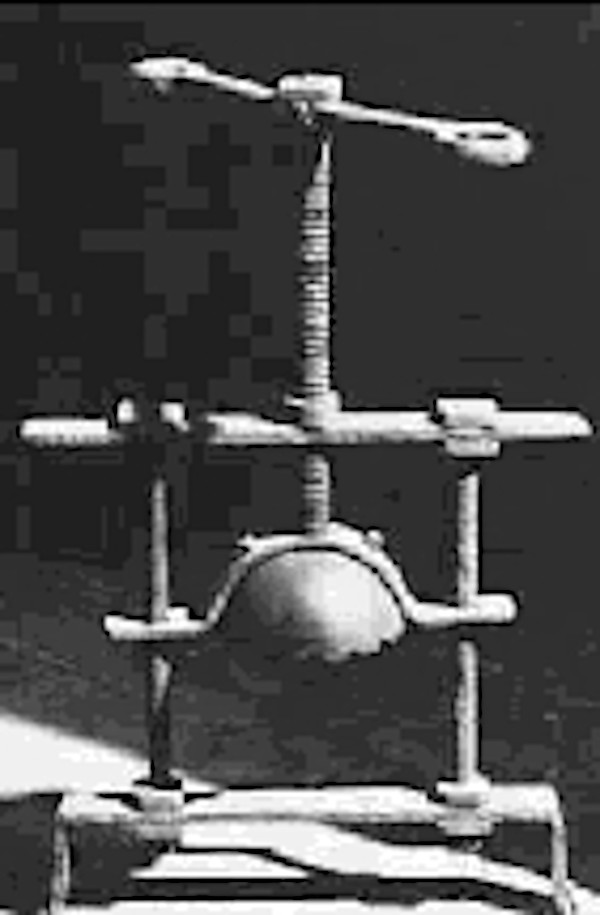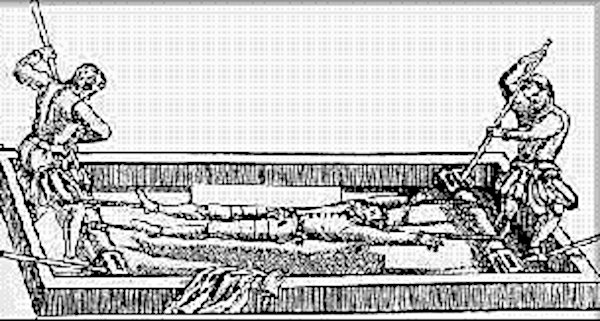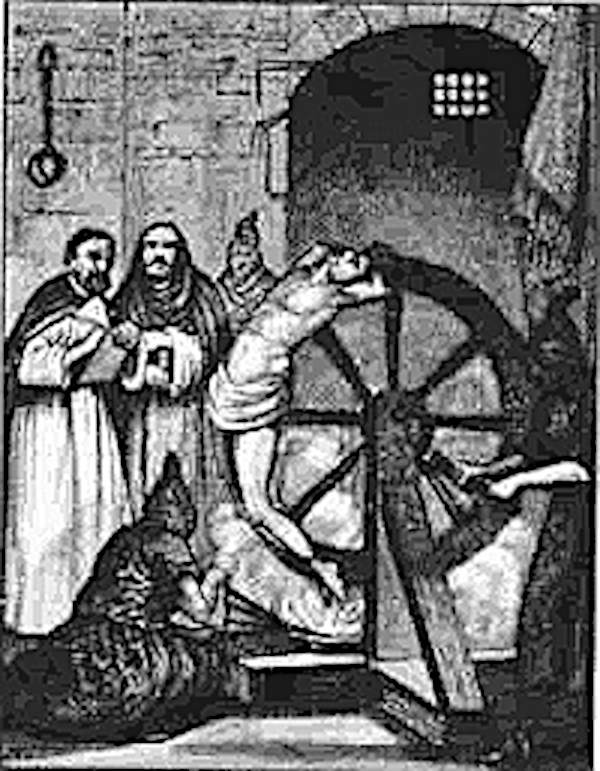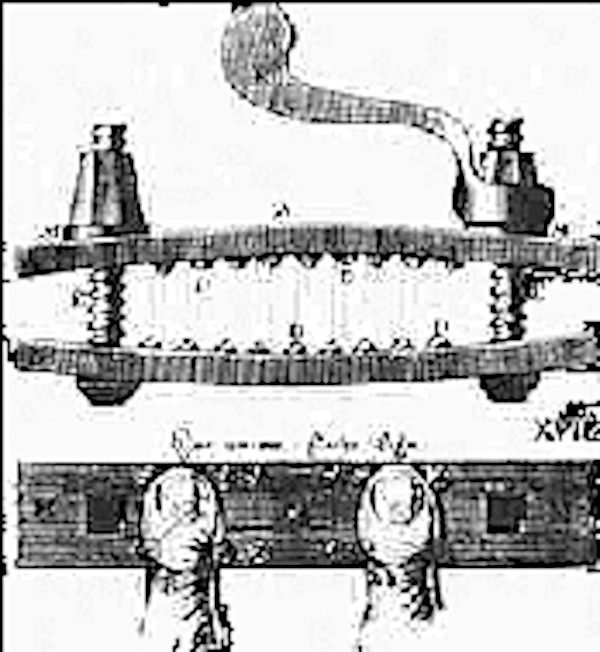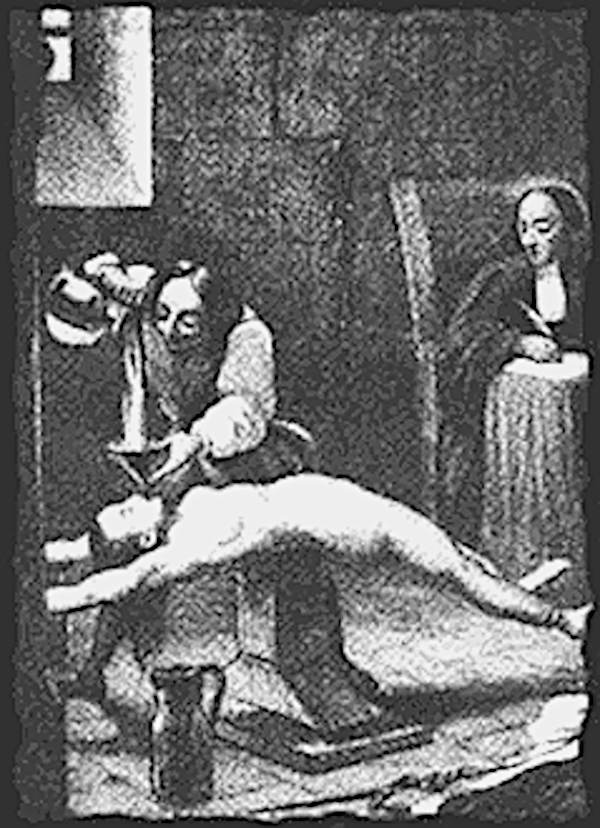
They came with a Bible and their religion, stole our land, crushed our spirit, and now they tell us we should be thankful to the lord for being saved.
Unholy Church
They came with a Bible and their religion, stole our land, crushed our spirit, and now they tell us we should be thankful to the lord for being saved.
Damnation
Damnation (from Latin damnatio) is the concept of divine punishment and torment in an afterlife for actions that were committed, or in some cases, not committed on Earth.
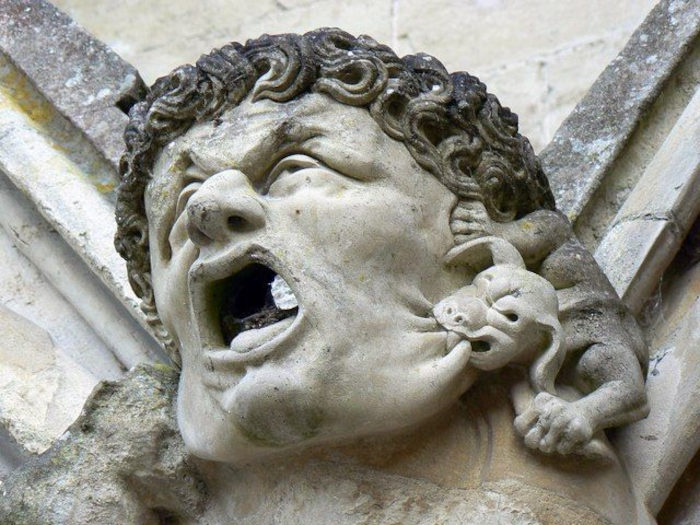

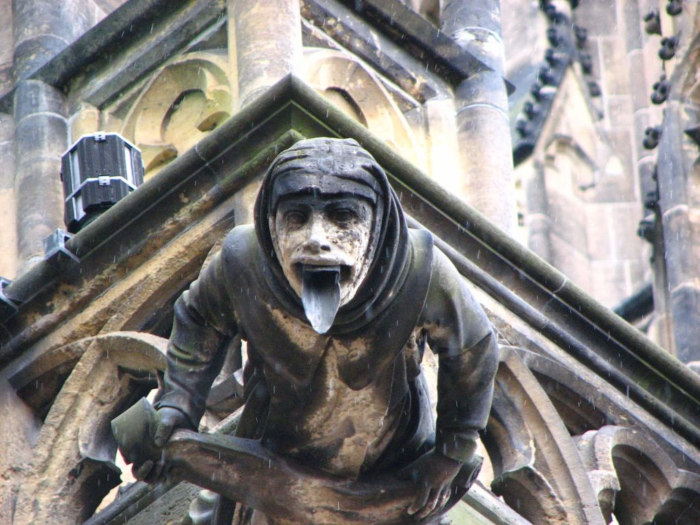
The reasons for being damned have varied widely through the centuries, with little consistency between different forms of Christianity (i.e., Catholic or Protestant). "Sins" ranging from murder to dancing have been said to lead to damnation.
Torture
Throughout history, torture chambers have been used in a multiplicity of ways starting from Roman times. Torture chamber use during the Middle Ages was frequent. Religious, social and political persecution led to the widespread use of torture during that time. Torture chambers were also used during the Spanish Inquisition and at the Tower of London. During the centuries-long Christian domination of Europe, skilled torturers used methods and devices to prolong the life of the prisoner as much as possible while inflicting the greatest agony.
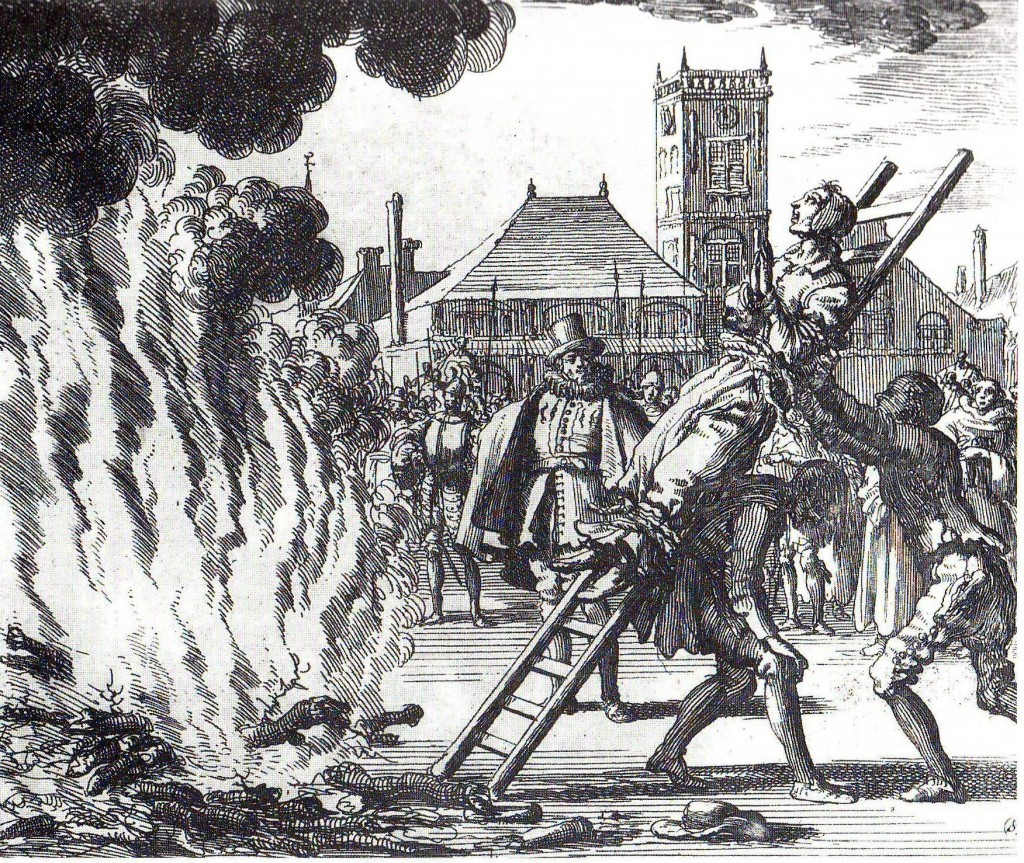
According to Frederick Howard Wines in his book Punishment and Reformation: A Study of the Penitentiary System there were three main types of coercion employed in the torture chamber: coercion by cord, water, or fire. The process of being tied and led to the torture rack inside the torture chamber was a form of intimidation and was called territio realis as opposed to territio verbalis oder lexis which was the verbal threat of torture being made at the judgment hall. Territio realis as well as the actual torture session were called examen rigorosum.
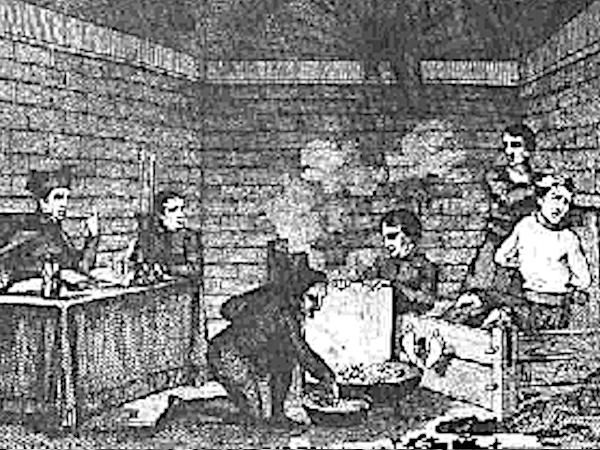
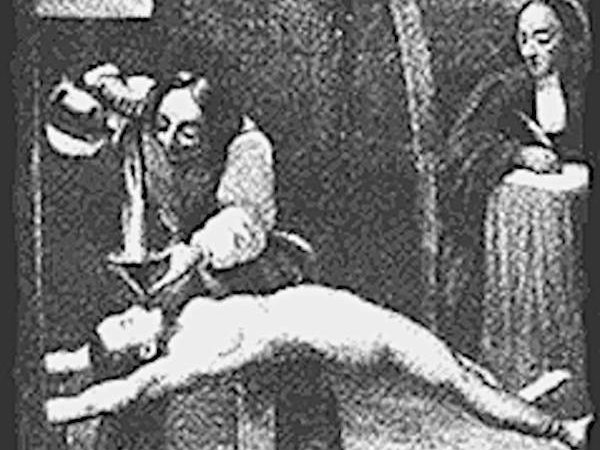
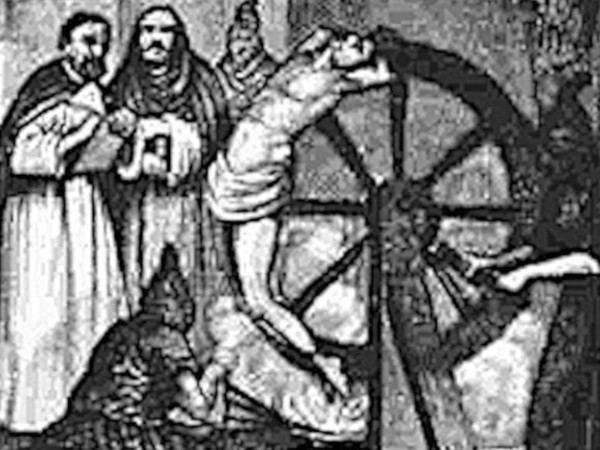
People were literally sawed in half, either across the body or along body length. Heads were crushed between two metal plates that closed like a vise. The handle of the vise was cranked, crushing the skull and facial bones. If the torture stopped before death, the victim would suffer permanent facial disfigurement. Torturers also crushed victims’ knees, ripped off women’s breasts, and systematically broke bones to prolong the torture for days.
The breast ripper, known in another form as the Iron Spider or simply the Spider, was a torture instrument used on women, usually who were accused of adultery or self-performed abortion. The instrument was designed to rip the breasts from a woman and was made from iron, which was usually heated. It contained four claws, which were used to slowly rip the breasts from women. The instrument would be imposed onto a single breast of the woman. They were designed to shred, or tear off the breasts of the victim.
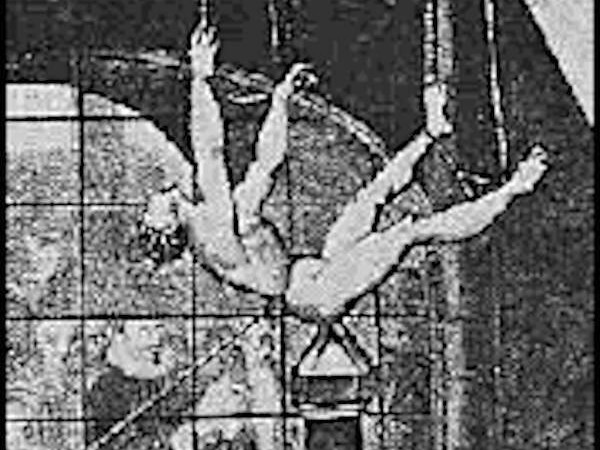
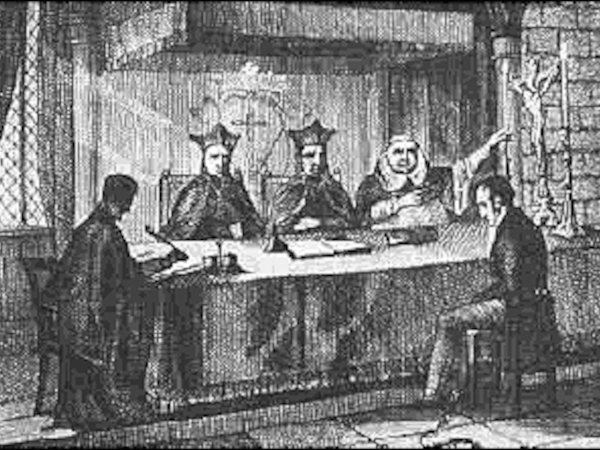
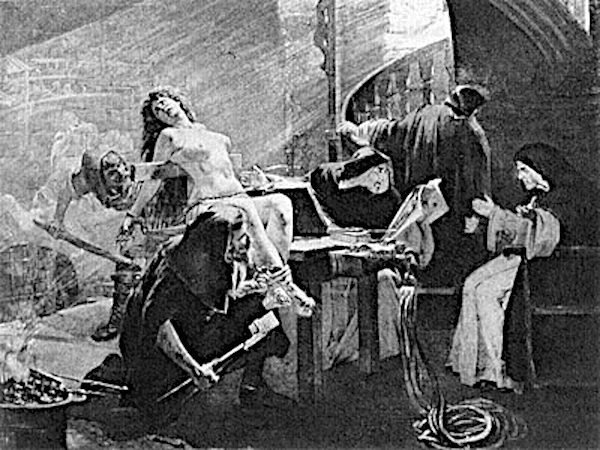
“It is from the Bible that man has learned cruelty, rapine, and murder; for the belief of a cruel God makes a cruel man.”.
There were five stages of torture that could have been applied to the accused: he could have been threatened with torture, he could have been taken to the torture chamber and been shown the instruments, he could have been undressed as if in preparation to be tied to the instrument, without actually being tied, he could have been tied to the instrument of torture but not actually getting tortured and finally he could have been tied to the instrument and tortured.
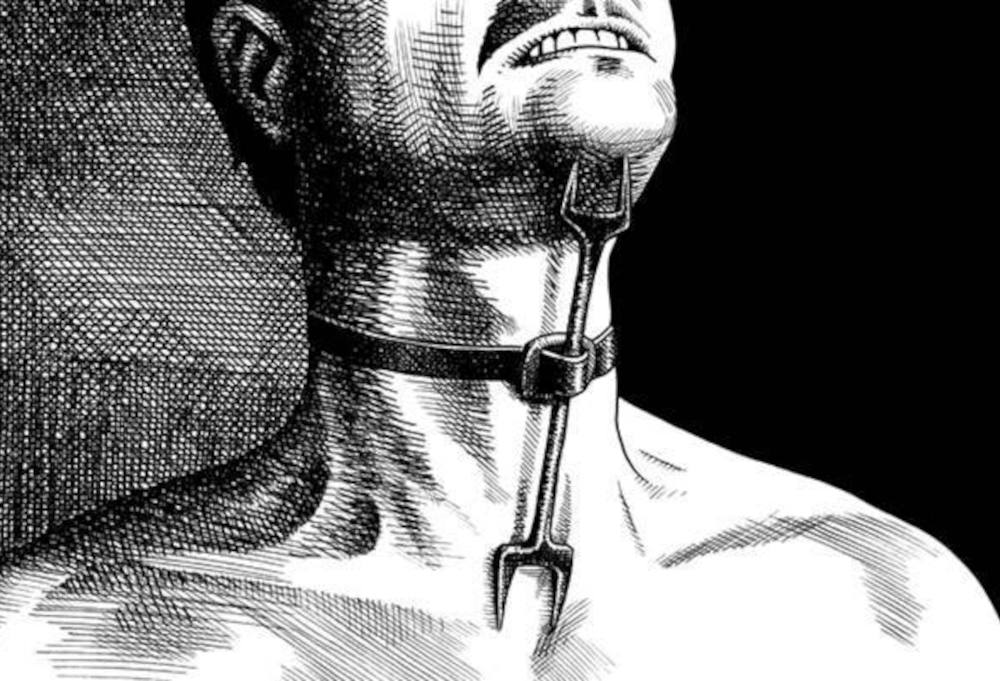
When during the Question, the view of the chamber, the torture implements and the executioner did not cause the victim to confess, a full-scale torture session was planned. To prepare for torture, the victim was stripped naked with hands tied. The penultimate step to torture included a repetition of the questions asked earlier of the victims. If the victims still proclaimed their innocence, full torture was initiated.
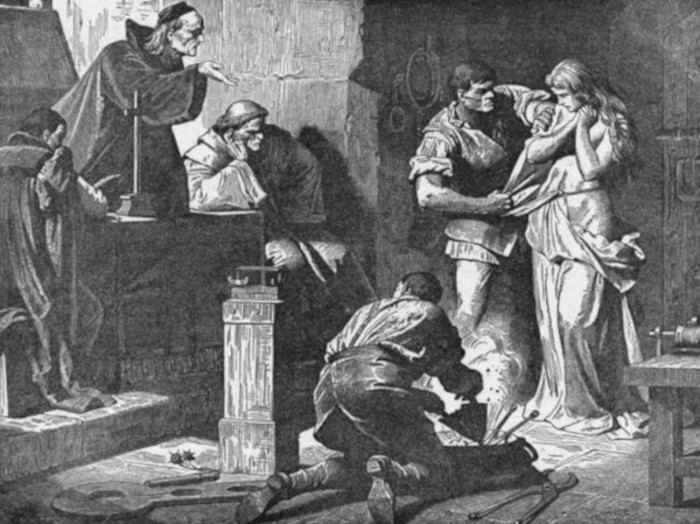
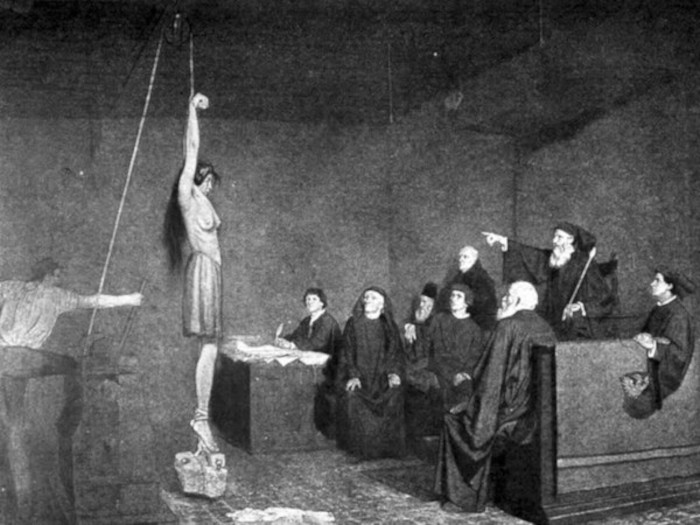
The most common instrument of torture was the strappado, which was a simple rope and pulley system. With the pulley attached to ceiling of the chamber, the lifting rope was tied to the wrist of the victim, whose hands were tied behind their back. Subsequently, the victim was raised to the ceiling and then lowered using a jerking motion causing dislocation of the shoulder joints. To increase the suffering caused by the strappado, weights were attached to the feet of the victim.
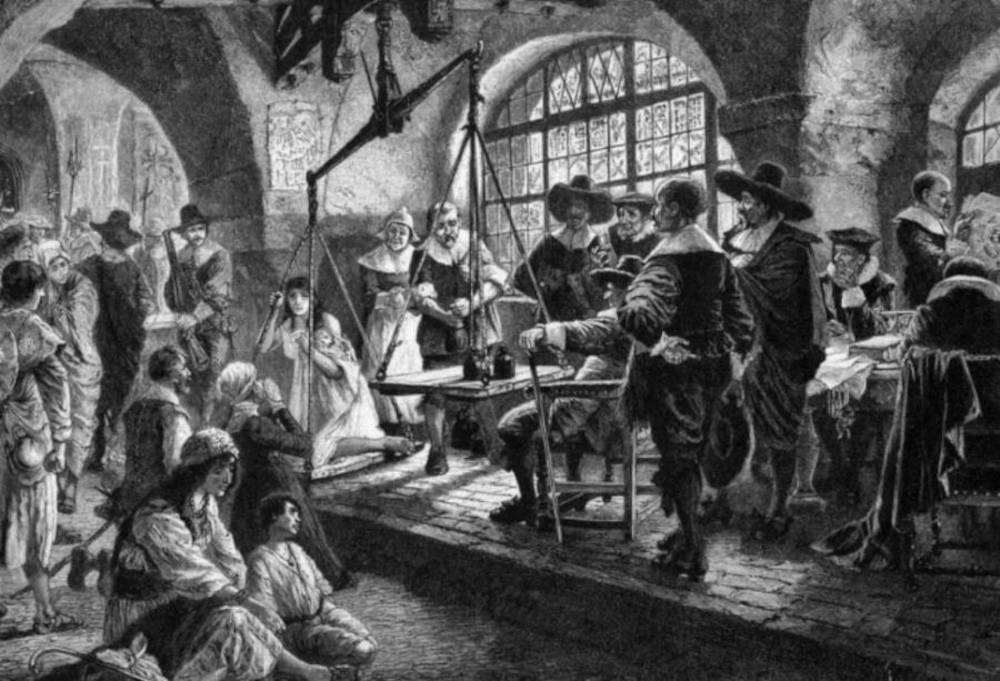
Duking was a form of punishment that was mainly reserved for supposed witches. The victim was tied to a chair which was elevated by ropes above a pond or barrel/vat of water. The victim was then lowered into the water until completely underwater/submerged. The chair was raised if the victim was about to pass out or to give the victim a chance to confess.
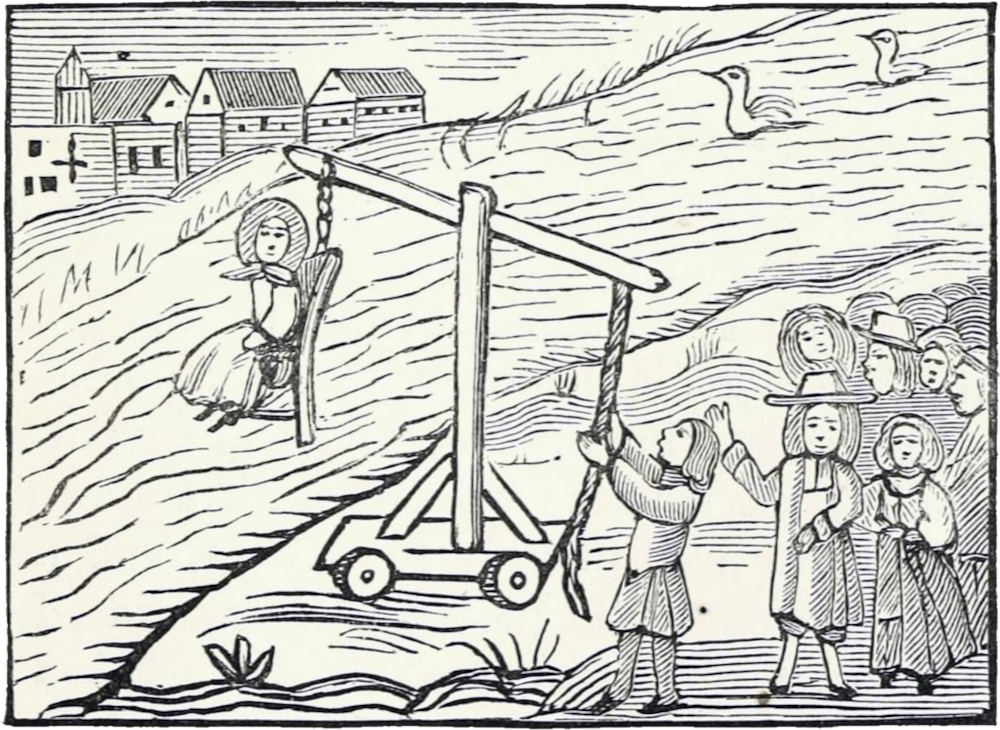
Often, some form of a plug, or more simply, a piece of fruit, was placed in the victim's mouth and nose beforehand, so they couldn't get a good breath before being dunked. If the victim confessed they would most likely be killed. This method was widely used during the Spanish Inquisition and in England and France.
The Inquisition had jurisdiction only over Christians. It had no power to investigate, prosecute, or convict Jews, Muslims, or any open member of other religions. Anyone who was known to identify as either Jew or Muslim was outside Inquisitorial jurisdiction and could be tried only by the King.

All the inquisition could do in some of those cases was to deport the individual according to the King's law, but usually, even that had to go through a civil tribunal. As the Inquisition proceeded merrily along through the 1400s, its focus shifted from heretics and moved towards so-called witches.
Stigmatism
In 1484, Pope “Innocent” VIII issued a bull declaring that witches did indeed exist, and thus it became a heresy to believe otherwise. This was quite a reversal because in 906 the Canon Episcopi, a church law, declared that belief in the existence and operation of witchcraft was heresy. As a result of this, church authorities tortured and killed thousands of women, and not a few men, to get them to confess that they flew through the sky, had sexual relations with demons, turned into animals, and engaged in various sorts of black magic.
“Talking to yourself was a particularly suspect behaviour, especially if the words were inaudible, leading to assumptions that the individual was muttering spells under their breath. This was just one of the traits exhibited by Pendle Witch Anne Whittle alias Chattox which were used as proof of her witchcraft. At the time of her trial in 1612, Chattox was an old lady of around 80 and probably suffering from dementia. However, her eccentric behaviour was used against her when the judges were told how Chattox was always “more ready to do mischief to men’s goods, then themselves, her lips ever chattering and walking: but no man knew what”.
For two years in the mid-1640s, terrifying witch hunts were unleashed on a population already reeling from the first English Civil War. People who were different in any way, through age, or physical disability, or mental disability, were picked out by those who wanted to believe there was some specific reason why things had gone wrong.
The Malleus Maleficarum, usually translated as the Hammer of Witches, is the best known treatise on witchcraft. It was written by the Catholic clergyman Heinrich Kramer (under his Latinized name Henricus Institoris) and first published in the German city of Speyer in 1486. It endorses extermination of witches and for this purpose, develops a detailed legal and theological theory. It has been described as the compendium of literature in demonology of the 15th century.
Section I examines the concept of witchcraft theoretically, from the point of view of natural philosophy and theology. Specifically, it addresses the question of whether witchcraft is a real phenomenon or imaginary, perhaps “deluding phantasms of the devil, or simply the fantasies of overwrought human minds”. The conclusion drawn is that witchcraft must be real because the Devil is real. Witches entered into a pact with Satan to allow them the power to perform harmful magical acts, thus establishing an essential link between witches and the Devil.
Section II Matters of practice and actual cases are discussed, and the powers of witches and their recruitment strategies. It states that it is mostly witches, as opposed to the Devil, who do the recruiting, by making something go wrong in the life of a respectable matron that makes her consult the knowledge of a witch, or by introducing young maidens to tempting young devils. It details how witches cast spells, and remedies that can be taken to prevent witchcraft, or help those who have been affected by it.
Section III is the legal part of the Malleus Maleficarum that describes how to prosecute a witch. The arguments are clearly laid for the lay magistrates prosecuting witches. The section offers a step-by-step guide to the conduct of a witch trial, from the method of initiating the process and assembling accusations, to the interrogation (including torture) of witnesses, and the formal charging of the accused. Women who did not cry during their trial were automatically believed to be witches.
The Malleus elevates sorcery to the criminal status of heresy and recommends that secular courts prosecute it as such. The Malleus suggests torture to effectively obtain confessions and the death penalty as the only certain remedy against the evils of witchcraft. At the time of its publication, heretics were frequently punished to be burned alive at the stake, and the Malleus encouraged the same treatment of witches. The book had a strong influence on culture for several centuries.
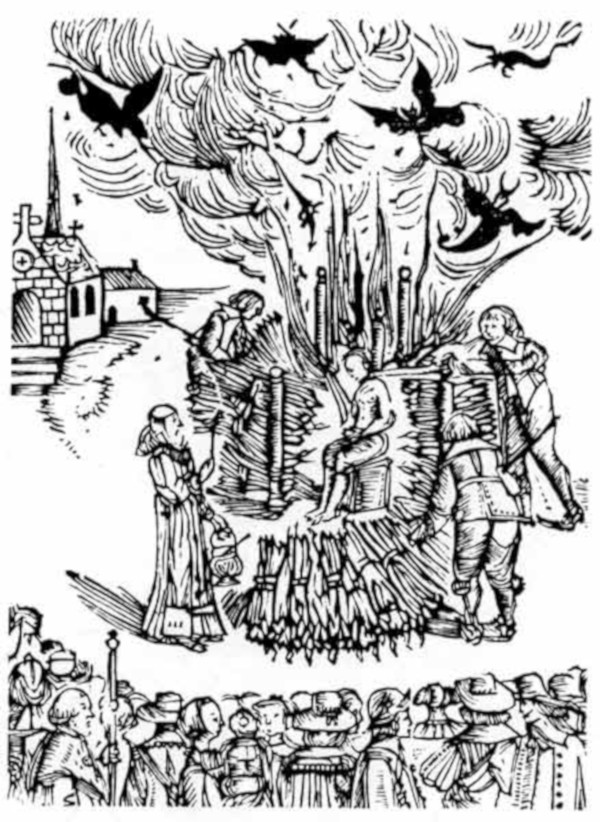
Burning was used during the witch-hunts of Europe, although hanging was the preferred style of execution in England and Wales. The penal code known as the Constitutio Criminalis Carolina (1532) decreed that sorcery throughout the Holy Roman Empire should be treated as a criminal offence, and if it purported to inflict injury upon any person the witch was to be burnt at the stake. In 1572, Augustus, Elector of Saxony imposed the penalty of burning for witchcraft of every kind, including simple fortunetelling.
Stigmatisms were not an atrocity unique to England. Across Europe, fifty-thousand men and women were executed for witchcraft between 1500 and 1800:
- English law made witchcraft a secular crime with the Witchcraft Act 1542.
- In 1532 “Constitutio Criminalis Carolina” by Emperor Charles V declared that harmful witchcraft should be punished by death by fire; witchcraft that resulted in no harm was to be “punished otherwise”.
- A wave of witch hunts were launched in southern Germany in the 1560s and 1570.
- The second English Witchcraft Act was passed in 1563.
- Many historians consider the period of 1580–1650, especially the years 1610–1630, as the one with the largest number of witchcraft cases.
- The 1580s were one of the periods of frequent witchcraft trials in England.
- In 1604, the Act of James I expanded punishable offences related to witchcraft.
- The Pendle witch trials in Lancashire, England, accused 12 witches. The charges included the murder of 10 by witchcraft. Ten were found guilty and executed, one died in prison, and one was found not guilty 1612
- A handbook for English judges on pursuing witches was published in 1618.
- The Loudun witch trials of 1634 took place in France after Ursuline nuns reported being possessed. They claimed to be the victims of Father Urbain Grandier, who was convicted of sorcery despite refusing to confess, even under torture. Although Father Grandier was executed, the “possessions” continued to occur until 1637.
- The 1640s were one of the periods of frequent witchcraft trials in England.
- A wave of witch trials started in northern Germany, 1660.
- In 1682 King Louis XIV of France prohibited further witchcraft trials in that country.
- Mary Trembles and Susannah Edward were hanged, the last documented witch hangings in England itself, in 1682.
- Salem witch trials took place during 1692 in the British colony of Massachusetts.
- Matilda Joslyn Gage in 1893 published “Women, Church and State” which reported that nine million witches had been executed.
- Margaret Murray's “The Witch Cult in Western Europe” was published in 1921. In this book about the witch trials, she argued that witches represented a pre-Christian “old religion.” She contended that the Plantagenet kings were protectors of the witches, and Joan of Arc was a pagan priestess.
Most of the accusations took place in parts of what are now Germany, France, the Netherlands, and Switzerland, then the Holy Roman Empire. While witchcraft was condemned as early as Biblical times, the hysteria about “black magic” in Europe spread at different times in various regions, with the bulk of executions related to the practice occurring during the years 1580–1650.
“All national institutions of churches, whether Jewish, Christian, or Turkish, appear to me no other than human inventions set up to terrify and enslave mankind, and monopolize power and profit.”.
In Exodus 7, after Moses throws down his staff and turns it into a snake, “Pharaoh then summoned wise men and sorcerers, and the Egyptian magicians also did the same things by their secret arts.” In Micah 5:12, God himself announces that he “will destroy your witchcraft and you will no longer cast spells.” The Bible prescribes capital punishment to those who practice witchcraft, in Exodus 22:18, which I mentioned — “Thou shalt not suffer a witch to live.” ; Also, in Leviticus 20:27 — “A man or a woman who is a spiritist or a medium must be put to death. . . their blood will be on their own heads.” Revelation 21:8 declares that “those who practice magic arts” will be cast into the lake of fire.
Desecration
Desecration is the act of depriving something of its sacred character, or the disrespectful, contemptuous, or destructive treatment of that which is held to be sacred or holy by a group or individual. Many consider acts of desecration to be sacrilegious acts. This can include desecration of sacred books, sacred places or sacred objects. Desecration generally may be considered from the perspective of a particular religion or spiritual activity.
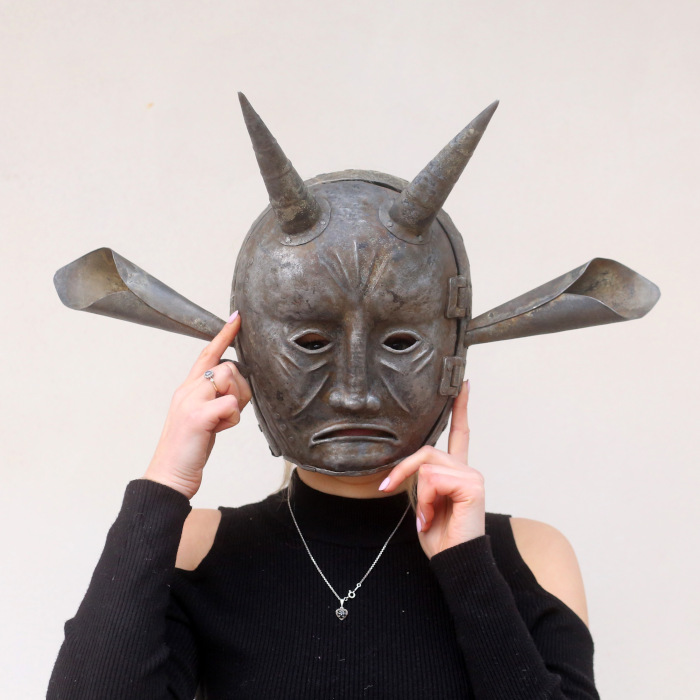
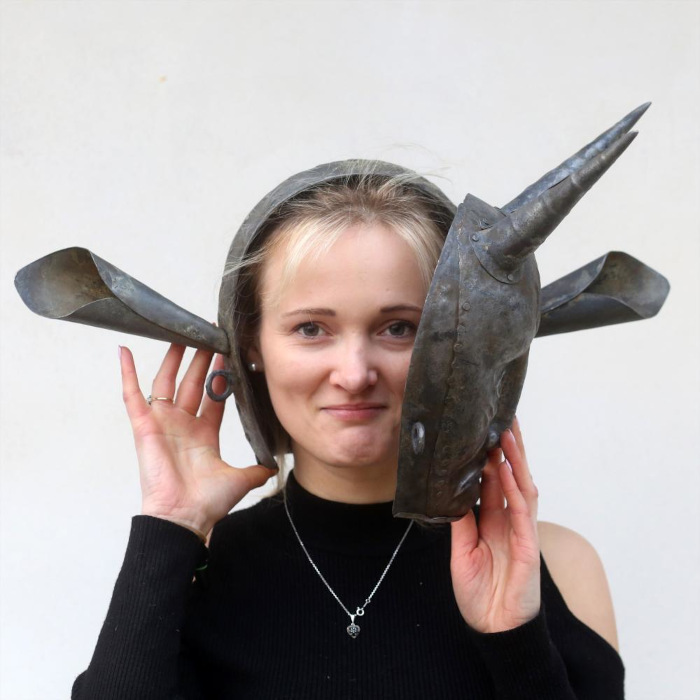
“The first step in liquidating a people is to erase its memory. Destroy its books, its culture, its history. Then have somebody write new books, manufacture a new culture, invent a new history. Before long, that nation will begin to forget what it is and what it was… The struggle of man against power is the struggle of memory against forgetting”.
Desecration may be applied to natural systems or components, particularly if those systems are part of naturalistic spiritual religion.
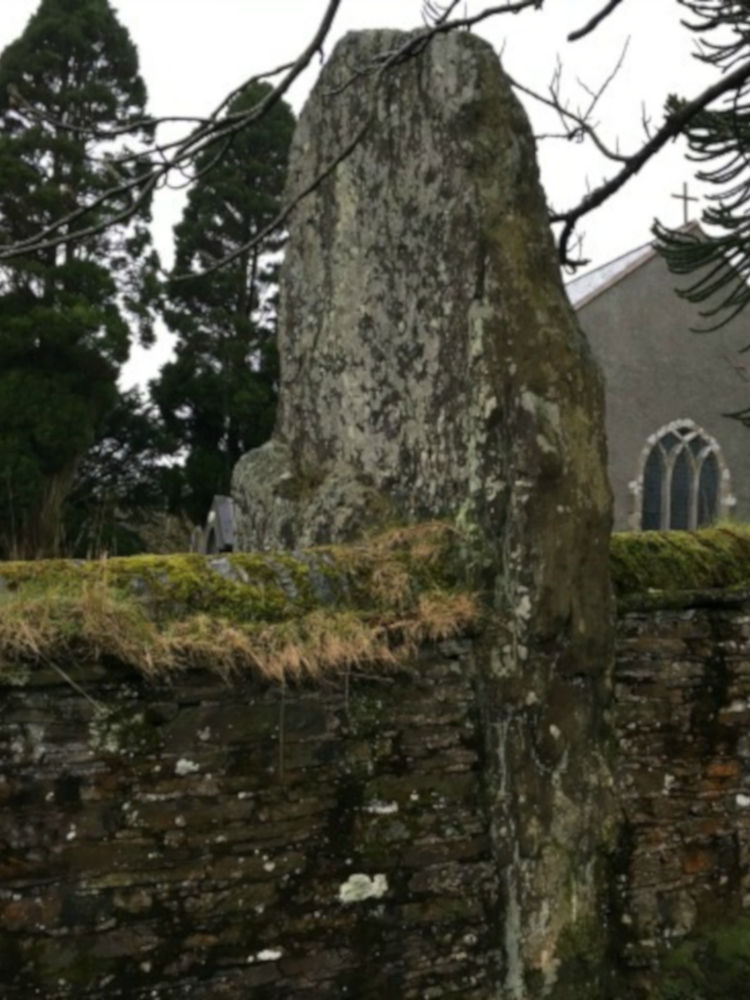
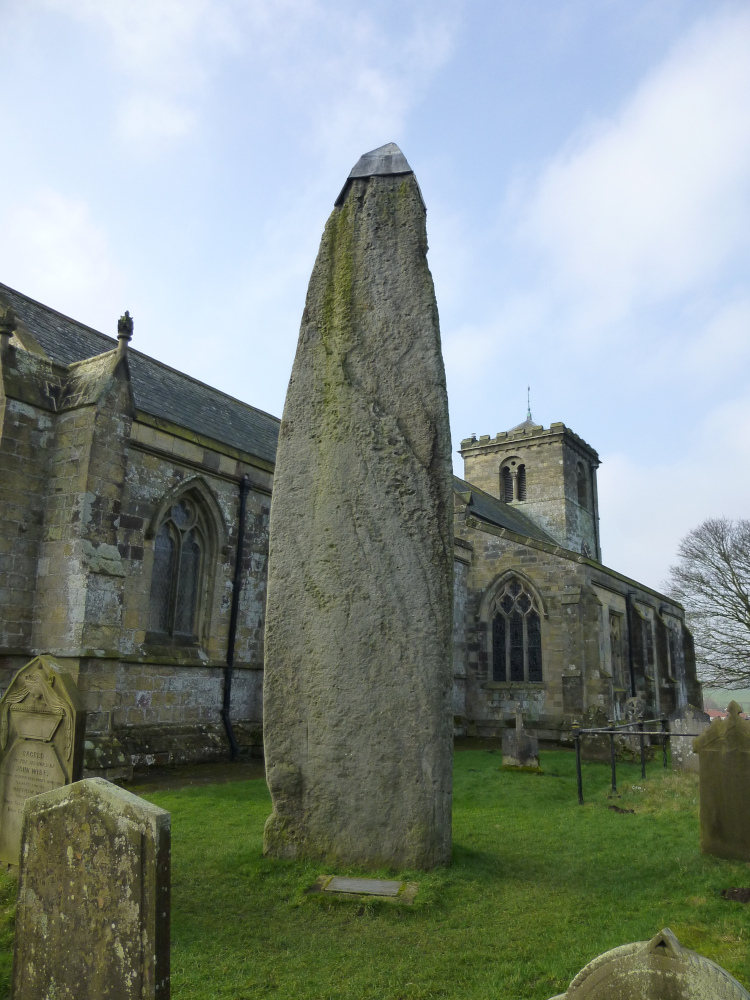

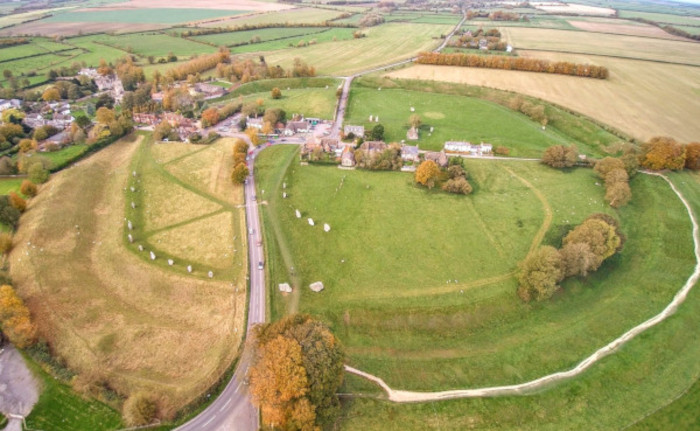
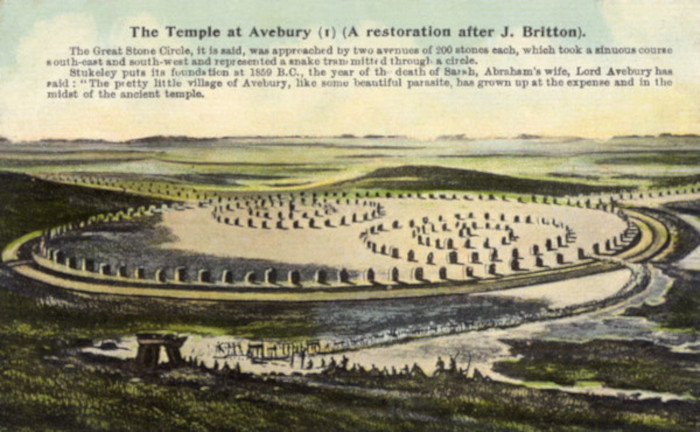
“The Christian religion is a parody on the worship of the sun, in which they put a man called Christ in the place of the sun, and pay him the adoration originally paid to the sun”.
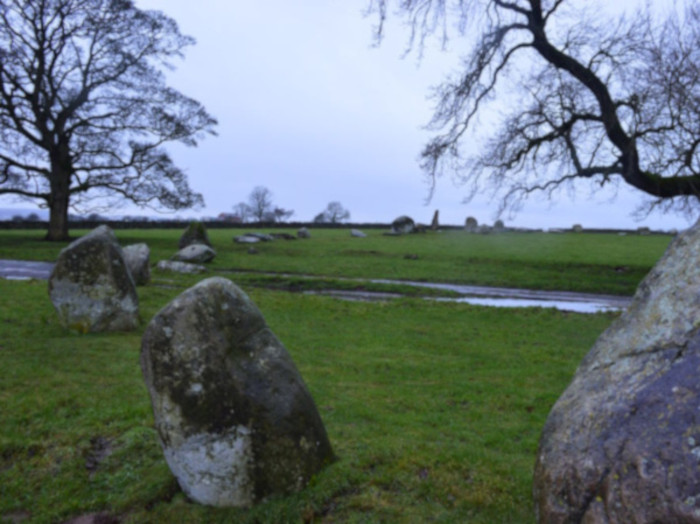
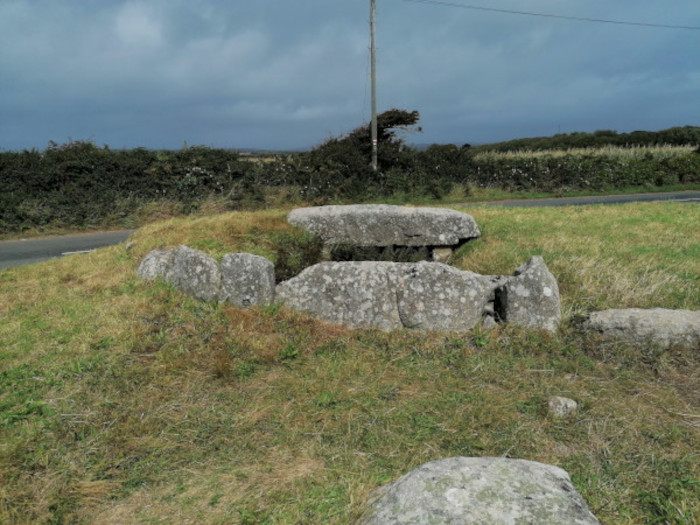
Examples of the destruction of pagan temples in the late fourth century, as recorded in surviving texts, describe Martin of Tours' attacks on holy sites in Gaul, the destruction of temples in Syria by Marcellus the destruction of temples and images in, and surrounding, Carthage, the Patriarch Theophilus who seized and destroyed pagan temples in Alexandria, the levelling of all the temples in Gaza and the wider destruction of holy sites that spread rapidly throughout Egypt.
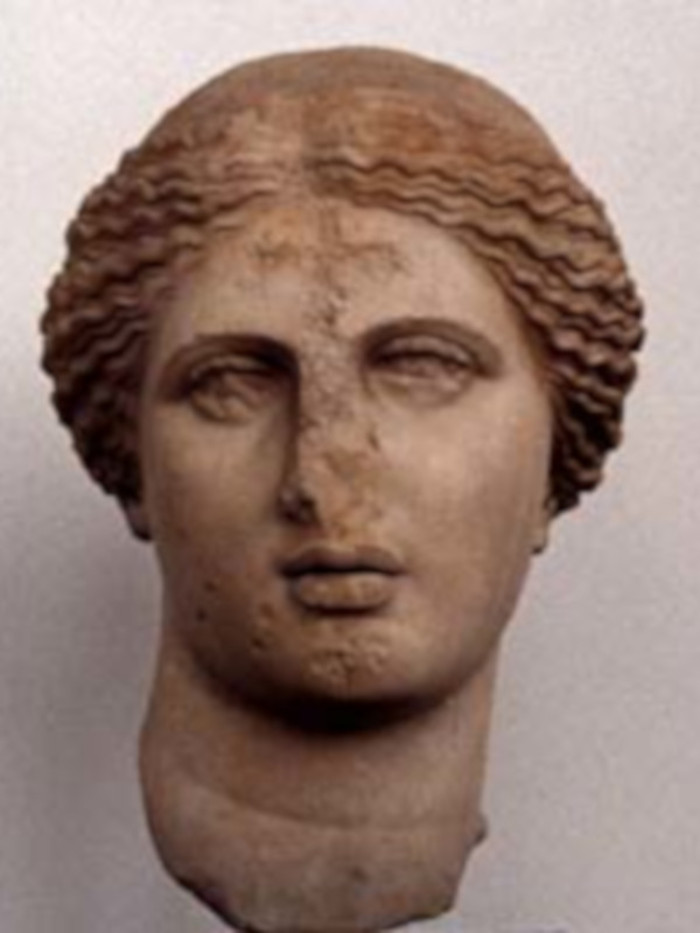
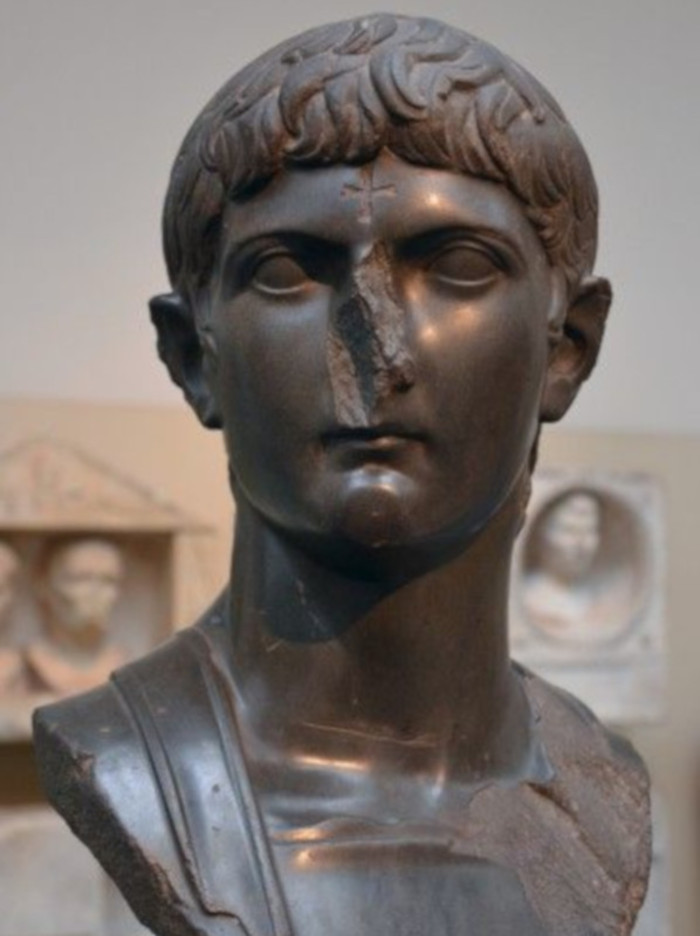
This is supplemented in abundance by archaeological evidence in the northern provinces exposing broken and burnt out buildings and hastily buried objects of piety. The leader of the Egyptian monks who participated in the sack of temples replied to the victims who demanded back their sacred icons:
“I peacefully removed your gods...there is no such thing as robbery for those who truly possess Christ.”.
At the turn of the century St Augustine gave a sermon to his congregation in Carthage on removing all tangible symbols of paganism:
“Am I saying "Stop wanting what you want"? On the contrary, we must be thankful that you want what God wants. That every superstition of the pagans and the Gentiles should be abolished is what God wants, God has ordered, God has foretold, God has begun to bring about, and in many parts of the world has already in great measure achieved.”.
In the year 407 a decree was issued to the west from Rome:
“If any images stand even now in the temples and shrines...., they shall be torn from their foundations...The temples situated in cities or towns shall be taken for public use. Altars shall be destroyed in all places.”.
Sacred sites were now appropriated by Christianity: "Let altars be built and relics be placed there" wrote Pope Gregory I, "so that [the pagans] have to change from the worship of the daemones to that of the true God."
Timeline 314AD - 950AD
Christian Atrocities: Centuries Of Pagan Persecution By Dr. Mike McGee (1998)
- 314 Immediately after its full legalisation, the Christian Church attacks the gentiles (non-Christians). The Council of Ancyra denounces the worship of Goddess Artemis.
- 324 The emperor Constantine declares Christianity as the only official religion of the Roman empire. In Dydima, Minor Asia, he sacks the Oracle of the god Apollo and tortures the Pagan priests to death. He also evicts all non-Christian peoples from Mount Athos and destroys all the local Hellenic temples.
- 326 Constantine, following the instructions of his mother Helen, destroys the temple of the god Asclepius in Aigeai Cilicia and many temples of the goddess Aphrodite in Jerusalem, Aphaca, Mambre, Phoenicia, Baalbek, etc.
- 330 Constantine steals the treasures and statues of the Pagan temples of Greece to decorate Nova Roma (Constantinople), the new capital of his Empire.
- 335 Constantine sacks many Pagan temples of Minor Asia and Palestine and orders the execution by crucifixion of “all magicians and soothsayers”. Martyrdom of the neoplatonist philosopher Sopatrus.
- 341 Flavius Julius Constantius persecutes “all the soothsayers and the Hellenists”. Many gentile Hellenes are either imprisoned or executed.
- 346 New large scale persecutions against non-Christian peoples in Constantinople. Banishment of the famous orator Libanius accused as a “magician”.
- 353 An edict of Constantius orders the death penalty for all kind of worship through sacrifices and “idols”.
- 354 A new edict of Constantius orders the closing of all Pagan Temples. Some of them are profaned and turned into brothels or gambling rooms. Executions of Pagan priests. First burning of libraries in various cities of the Empire. The first lime factories are built next to closed Pagan Temples. A large part of Sacred Gentile architecture is turned into lime.
- 356 A new edict of Constantius orders the destruction of the Pagan Temples and the execution of all “idolaters”.
- 357 Constantius outlaws all methods of Divination (Astrology not excluded).
- 359 In Skythopolis, Syria, the Christians organise the first death camps for the torture and executions of the arrested non-Christians from all around the empire.
- 361 to 363 Religious tolerance and restoration of the Pagan cults declared in Constantinople (11th December 361) by the Pagan emperor Flavius Claudius Julianus.
- 363 Assassination of Emperor Julianus (26th June).
- 364 Emperor Flavius Jovianus orders the burning of the Library of Antioch. An Imperial edict (11th September) orders the death penalty for all Gentiles that worship their ancestral Gods or practice Divination (“sileat omnibus perpetuo divinandi uriositas”). Three different edicts (4th February, 9th September, 23rd December) order the confiscation of all properties of Pagan Temples and the death penalty for participation in Pagan rituals, even private ones.
- 365 An Imperial edict (17th November) forbids the gentile (Pagan) officers of the army to command Christian soldiers.
- 370 Valens orders a tremendous persecution of non-Christian peoples in all the Eastern Empire. In Antioch, among many other non-Christians, the ex-governor Fidustius and the priests Hilarius and Patricius are executed. Tons of books are burnt in the squares of the cities of the Eastern Empire. All the friends of Julianus are persecuted (Orebasius, Sallustius, Pegasius etc.), the philosopher Simonides is burned alive and the philosopher Maximus is decapitated.
- 372 Valens orders the governor of Minor Asia to exterminate all the Hellenes and all documents of their wisdom.
- 373 New prohibition of all divination methods. The term “Pagan” (pagani, villagers, equivalent to the modern insult, “peasants”) is introduced by the Christians to demean non-believers.
- 375 The temple of god Asclepius in Epidaurus, Greece, is closed down by the Christians.
- 380 On 27th February, Christianity becomes the exclusive religion of the Roman Empire by an edict of Emperor Flavius Theodosius, requiring that “all the various nations, which are subject to our clemency and moderation should continue in the profession of that religion, which was delivered to the Romans by the divine Apostle Peter”. Non-christians are called “loathsome, heretics, stupid and blind”. In another edict Theodosius calls “insane” those that do not believe in the christian god and outlaws all disagreements with the Church dogmas. Ambrosius, bishop of Milan, starts destroying all the Pagan Temples of his area. Christian priests lead the mob against the Temple of Goddess Demeter in Eleusis and try to lynch the hierophants Nestorius and Priskus. The 95 year-old hierophant Nestorius, ends the Eleusinian Mysteries and announces the predominance of mental darkness over the human race.
- 381 On 2nd May, Theodosius deprives of all their rights the Christians that return back to the Pagan religion. In all the Eastern Empire the Pagan temples and Libraries are looted or burned down. On 21st December, Theodosius outlaws even simple visits to the temples of the Hellenes. In Constantinople, the temple of goddess Aphrodite is turned to a brothel and the temples of Sun and Artemis to stables.
- 382 “Hellelujah” (“Glory to Yahweh”) is imposed in the Christian mass.
- 384 Theodosius orders the Praetorian Prefect Maternus Cynegius, a dedicated Christian, to cooperate with the local bishops and destroy the temples of the Pagans in Northern Greece and Minor Asia.
- 385 to 388 Maternus Cynegius, encouraged by his fanatic wife, and bishop “Saint” Marcellus with his gangs scour the countryside and sack and destroy hundreds of Hellenic temples, shrines and altars. Among others they destroy the temple of Edessa, the Cabeireion of Imbros, the temple of Zeus in Apamea, the temple of Apollo in Dydima and all the temples of Palmyra. Thousands of innocent Pagans from all sides of the empire suffer martyrdom in the notorious death camps of Skythopolis.
- 386 Theodosius outlaws (16th June) the care of the sacked Pagan temples.
- 388 Public talks on religious subjects are also outlawed by Theodosius. The old orator Libanius sends his famous Epistle “Pro Templis” to Theodosius, with a hope that the few remaining Hellenic Temples will be respected and spared.
- 389 to 390 All non-Christian date-methods are outlawed. Hordes of fanatic hermits from the desert flood the cities of the Middle East and Egypt and destroy statues, altars, libraries and Pagan temples, and lynch the Pagans. Theophilus, Patriarch of Alexandria, starts heavy persecutions against non-Christian peoples, turns the temple of Dionysos into a Christian church, burns down the Mithraeum of the city, destroys the temple of Zeus and burlesques the Pagan priests before they are killed by stoning. The Christian mob profanes the cult images.
- 391 On 24th February, a new edict of Theodosius prohibits not only visits to pagan temples but also looking at the vandalised statues. New heavy persecutions occur all around the empire. In Alexandria, Egypt, pagans, led by the philosopher Olympius, revolt and after some street fights they lock themselves inside the fortified temple of the god Serapis (the Serapeion). After a violent siege, the Christians take over the building, demolish it, burn its famous library and profane the cult images.
- 392 On 8th November, Theodosius outlaws all the non-Christian rituals and names them “superstitions of the gentiles” (gentilicia superstitio). New full scale persecutions against Pagans. The Mysteries of Samothrace are ended and the priests slaughtered. In Cyprus the local bishop “Saint” Epiphanius and “Saint” Tychon destroy almost all the temples of the island and exterminate thousands of non-Christians. The local Mysteries of goddess Aphrodite are ended. Theodosius’s edict declares: “the ones that won’t obey pater Epiphanius have no right to keep living in that island”. The Pagans revolt against the emperor and the Church in Petra, Aeropolis, Rafia, Gaza, Baalbek and other cities of the Middle East.
- 393 The Pythian Games, the Aktia Games and the Olympic Games are outlawed as part of the Hellenic “idolatry”. The Christians sack the temples of Olympia.
- 395 Two new edicts (22nd July and 7th August) cause new persecutions against Pagans. Rufinus, the eunuch Prime Minister of emperor Flavius Arcadius directs the hordes of the baptised Goths (led by Alaric) to the country of the Hellenes. Encouraged by Christian monks the barbarians sack and burn many cities (Dion, Delphi, Megara, Corinth, Pheneos, Argos, Nemea, Lycosoura, Sparta, Messene, Phigaleia, Olympia, etc.), slaughter or enslave innumerable gentile Hellenes and burn down all the temples. Among others, they burn down the Eleusinian Sanctuary and burn alive all its priests (including the hierophant of Mithras Hilarius).
- 396 On 7th December, a new edict by Arcadius orders that Paganism be treated as high treason. Imprisonment of the few remaining Pagan priests and hierophants.
- 397 “Demolish them!”. Flavius Arcadius orders all the still standing Pagan temples to be demolished.
- 398 The Fourth Church Council of Carthage prohibits to everybody, including to the Christian bishops, the study of the books of the Pagans. Porphyrius, bishop of Gaza, demolishes almost all the Pagan temples of his city (except 9 of them that remain active).
- 399 With a new edict (13th July) Flavius Arcadius orders all the still standing Pagan temples, mainly in the countryside, to be immediately demolished.
- 400 Bishop Nicetas destroys the Oracle of the god Dionysus in Vesai and baptises all the non-Christians of this area.
- 401 The Christian mob of Carthage lynches non-Christians and destroys temples and “idols”. In Gaza too, the local bishop “Saint” Porphyrius sends his followers to lynch Pagans and to demolish the remaining 9 still active temples of the city. The 15th Council of Chalkedon orders all the Christians that still keep good relations with their gentile relatives to be excommunicated (even after their death).
- 405 John Chrysostom sends hordes of gray dressed monks armed with clubs and iron bars to destroy the “idols” in all the cities of Palestine.
- 406 John Chrysostom collects funds from rich Christian women to financially support the demolition of the Hellenic temples. In Ephessus he orders the destruction of the famous temple of goddess Artemis. In Salamis, Cyprus, “Saints” Epiphanius and Eutychius continue the persecutions of the Pagans and the total destruction of their temples and sanctuaries.
- 407 A new edict outlaws once more all the non-Christian acts of worship
- 408 The emperor of the Western Empire, Honorius, and the emperor of the Eastern Empire, Arcadius, order together all the sculptures of the Pagan temples to be either destroyed or to be taken away. Private ownership of Pagan sculpture is also outlawed. The local bishops lead new heavy persecutions against the Pagans and new book burning. The judges that have pity for the Pagans are also persecuted. “Saint” Augustine massacres hundreds of protesting Pagans in Calama, Algeria.
- 409 Another edict orders all methods of divination including astrology to be punished by death.
- 415 In Alexandria, Egypt, the Christian mob, urged by the bishop Cyrillus, attacks a few days before the Judaeo-Christian Pascha (Easter) and cuts to pieces the famous and beautiful philosopher Hypatia. The pieces of her body, carried around by the Christian mob through the streets of Alexandria, are finally burned together with her books in a place called Cynaron. On 30th August, new persecutions start against all the Pagan priests of North Africa who end their lives either crucified or burned alive.
- 416 The inquisitor Hypatius, alias “The Sword of God”, exterminates the last Pagans of Bithynia. In Constantinople (7th December) all non-Christian army officers, public employees and judges are dismissed.
- 423 Emperor Theodosius II declares (8th June) that the religion of the Pagans is nothing more than “demon worship” and orders all those who persist in practicing it to be punished by imprisonment and torture.
- 429 The temple of goddess Athena (Parthenon) on the Acropolis of Athens is sacked. The Athenian Pagans are persecuted.
- 435 On 14th November, a new edict by Theodosius II orders the death penalty for all “heretics” and Pagans of the empire. Only Judaism is considered a legal non-Christian religion.
- 438 Theodosius II issues an new edict (31st January) against the Pagans, incriminating their “idolatry” as the reason of a recent plague!
- 440 to 450 The Christians demolish all the monuments, altars and temples of Athens, Olympia, and other Greek cities.
- 448 Theodosius II orders all non-Christian books to be burned. All copies of Julian’s work which could be found were destroyed, and they would have been lost entirely if bishop Cyril of Alexandria (376-444 AD), had not cited extracts from the first three of seven of Julian’s books in his refutation of him, while admitting that he would not cite some of his srguments!
- 450 All the temples of Aphrodisias (the City of the Goddess Aphrodite) are demolished and all its libraries burned down. The city is renamed Stavroupolis (City of the Cross).
- 451 New edict by Theodosius II (4th November) emphasises that “idolatry” is punished by death.
- 457 to 491 Sporadic persecutions against the Pagans of the Eastern Empire. Among others, the physician Jacobus and the philosopher Gessius are executed. Severianus, Herestios, Zosimus, Isidorus and others are tortured and imprisoned. The proselytiser Conon and his followers exterminate the last non-Christians of Imbros Island, Norheast Aegean Sea. The last worshippers of Lavranius Zeus are exterminated in Cyprus.
- 482 to 488 The majority of the Pagans of Minor Asia are exterminated after a desperate revolt against the emperor and the Church.
- 486 More “underground” Pagan priests are discovered, arrested, burlesqued, tortured and executed in Alexandria, Egypt.
- 515 Baptism becomes obligatory even for those that already say they are Christians. The emperor of Constantinople, Anastasius, orders the massacre of the Pagans in the Arabian city Zoara and the demolition of the temple of local god Theandrites.
- 528 Emperor Jutprada (Justinianus) outlaws the “alternative” Olympian Games of Antioch. He also orders the execution—by fire, crucifixion, tearing to pieces by wild beasts or cutting to pieces by iron nails—of all who practice “sorcery, divination, magic or idolatry” and prohibits all teachings by the Pagans (“the ones suffering from the blasphemous insanity of the Hellenes”).
- 529 Justinianus outlaws the Athenian Philosophical Academy and has its property confiscated.
- 532 The inquisitor Ioannis Asiacus, a fanatic monk, leads a crusade against the Pagans of Minor Asia.
- 542 Justinianus allows the inquisitor Ioannis Asiacus to convert the Pagans of Phrygia, Caria and Lydia, Minor Asia. Within 35 years of this crusade, 99 churches and 12 monasteries are built on the sites of demolished Pagan temples.
- 546 Hundreds of Pagans are put to death in Constantinople by the inquisitor Ioannis Asiacus.
- 556 Justinianus orders the notorious inquisitor Amantius to go to Antioch, to find, arrest, torture and exterminate the last non-Christians of the city and burn all the private libraries down.
- 562 Mass arrests, burlesquing, tortures, imprisonments and executions of gentile Hellenes in Athens, Antioch, Palmyra and Constantinople.
- 578 to 582 The Christians torture and crucify gentile Hellenes all around the Eastern Empire, and exterminate the last non-Christians of Heliopolis (Baalbek).
- 580 The Christian inquisitors attack a secret temple of Zeus in Antioch. The priest commits suicide, but the rest of the Pagans are arrested. All the prisoners, the Vice Governor Anatolius included, are tortured and sent to Constantinople to face trial. Sentenced to death they are thrown to the lions. The wild animals being unwilling to tear them to pieces, they end up crucified. Their dead bodies are dragged in the streets by the Christian mob and afterwards thrown unburied in the dump.
- 583 New persecutions against the gentile Hellenes by the Mauricius.
- 590 In all the Eastern Empire the Christian accusers “discover” Pagan conspiracies. New storm of torture and executions.
- 692 The “Penthekto” Council of Constantinople prohibits the remains of Calends, Brumalia, Anthesteria, and other Pagan/Dionysian celebrations.
- 804 The gentile Hellenes of Mesa Mani (Cape Tainaron, Lakonia, Greece) resist successfully the attempt of Tarasius, Patriarch of Constantinople, to convert them to Christianity.
- 950 to 988 Violent conversion of the last gentile Hellenes of Laconia by the Armenian “Saint” Nikon.
Source: Vlasis Rassias, Demolish Them!… published in Greek, Athens 1994, Diipetes Editions, ISBN 960-85311-3-6. Any similar material will be received gratefully.
Fornication
Catholicism equates premarital sex with fornication and ties it with breaking the sixth commandment ("Thou shalt not commit adultery") in its Catechism.
Magdalene Laundries
An estimated 30,000 “fallen” women as young as nine years old were confined in Ireland's Magdalen institutions in the 19th and 20th centuries. Nuns from the Sisters of Our Lady of Charity ran laundries at Drumcondra and Sean MacDermott Street in Dublin, the Sisters of Mercy in Galway and Dun Laoghaire, the Religious Sisters of Charity in Donnybrook, Dublin and Cork, and the Sisters of the Good Shepherd in Limerick, Cork, Waterford, and New Ross.
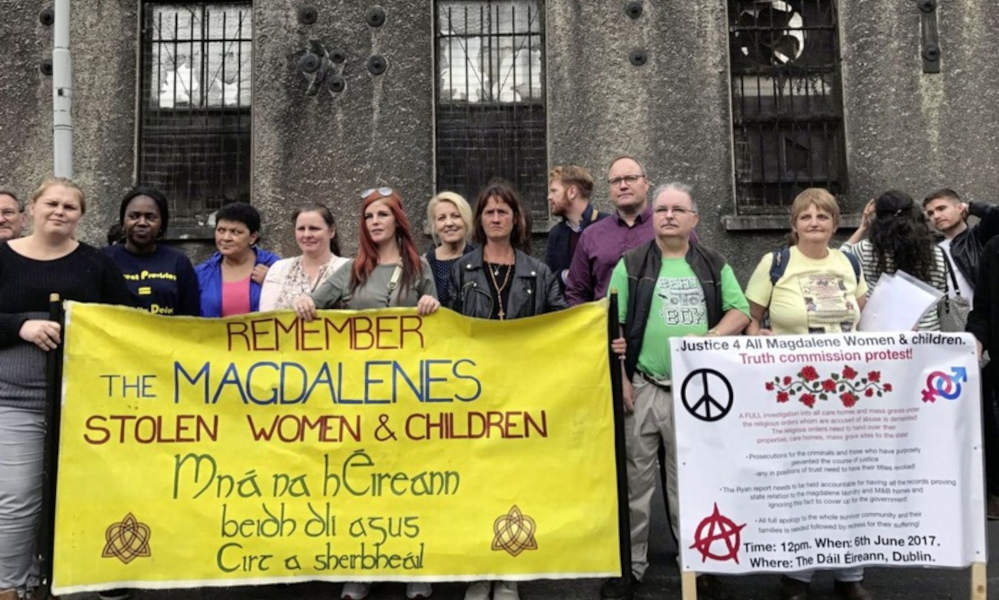
“You can't underestimate the sense of the stigma and the sense of shame attached to having been in one of these laundries”.
Revelations were only revealed when in 1993 the Sisters of Our Lady of Charity lost money in share dealings on the stock exchange; to cover their losses they sold part of the land in their convent to a property developer; building development then unearthed a mass grave containing 155 unregistered (no death certificates) corpses uncovered in the convent grounds of one of the laundries. This led to media revelations about the operations of the secretive institutions.
Women entering were placed on a Register of Penitents, their true identity was taken away, names changed, and forbidden to talk to any of the other Magdalene women. There were no trials, no inquiries, no nothing. The presumption that you were a sexual being was enough to condemn you to these institutions. So, the victims of abuse were guilty too, and, by bizarre extension, those in danger of corruption by their fathers, brothers, cousins, or just men in general also had to be saved from sin.
“Every morning you would awake to the sound of a bell. You operated like a robot, and you did not dare question a nun. We bathed once a week and I remember the lice from our hair used to float around the top of the water, so if you were one of the last to get washed it was horrific.”.
These institutions expanded rapidly to take in girls who were considered 'promiscuous', unmarried mothers, the criminal, mentally unwell and girls who were simply seen as a burden on their families. Survivors allege that they were treated like slaves, and in some cases the girls' families were told their daughters were studying at school and even received falsified reports. Babies born to the women were taken from them and adopted.
“I met a woman who had been brought up in an orphanage and then later stuck into the laundry. One day, she was taken into the parlour of the convent and told by a nun that her mother was dead. It turned out that she had worked alongside her mother for more than 20 years in the laundry and the nuns had kept it from them, knowing that her mother had been pining all that time for her child. Generation after generation was condemned in this way. You just cannot imagine how miserable and inhuman these places were. And the really terrible thing was that it was women doing it to other women.”.
Every woman who entered one of the closed laundries followed an example of Mary Magdalene, the prostitute who became the “13th apostle” of Christ, after whom the convents were named. Whilst interned these women suffered beatings, breast-binding, head-shaving, forced fasting and humiliating weekly mortification sessions, when women would be stripped and laughed at in spite of their vanity. The women had their self-esteem taken away, denied education, deprived them access to the outside world, the nuns even took away the women's means to express themselves, so they couldn't return in retribution.
Worked to the bone, starved, beaten and abused, women reported frequent injuries caused by handling the huge mangles, a precursor to the spin dryer…
“There were great big heavy rollers. The sheets would be red-hot. It would be the work of an adult man. I was up at six in the morning and every time the bell rang you went where you were told to go. I didn't know how old I was. There were no mirrors and birthdays were never celebrated.”.
The women (known as “The Magdalenes”) were said to have stayed in this hell voluntarily but if the women escaped, they were brought back by the police, who were also on hand to transfer troublesome women between institutions. Women spoken about trying to escape but being unable to scale the high walls, often topped with glass. Since 2001, the Irish government has acknowledged that women in the Magdalene laundries were victims of abuse. However, the Irish government has resisted calls for investigation and proposals for compensation; it maintains the laundries were privately run and abuses at the laundries are outside the government's remit.
“When the police took me back to the laundry, they didn't believe I had been raped but shaved my head, made me apologize for running away and put me in the punishment cell.”.
Having lobbied the government of Ireland for two years for investigation of the history of the Magdalene laundries, advocacy group Justice for Magdalenes presented its case to the United Nations Committee Against Torture (UNCAT), alleging that the conditions within the Magdalene laundries and the exploitation of their labourers amounted to human-rights violations. A formal state apology was issued in 2013, and a £50 million compensation scheme for survivors was set up by the Irish Government.
“I, as Taoiseach, on behalf of the State, the Government and our citizens deeply regret and apologise unreservedly to all those women for the hurt that was done to them.”.
A 1,000-page report into the Laundry rooms, “The McAleese report” found that the State facilitated the referral of at least 26.5 percent of women to the laundries. More than 10,000 women and girls via the governmental authorities entered the 10 laundries between 1922 and 1996.
“The nuns robbed me of my life and the life I could have given to others.”.
The same orders who operated in Ireland ran laundries in north and South America, Australia, France and are now to this day concentrating their efforts in other Third World countries such as Asia and Africa.
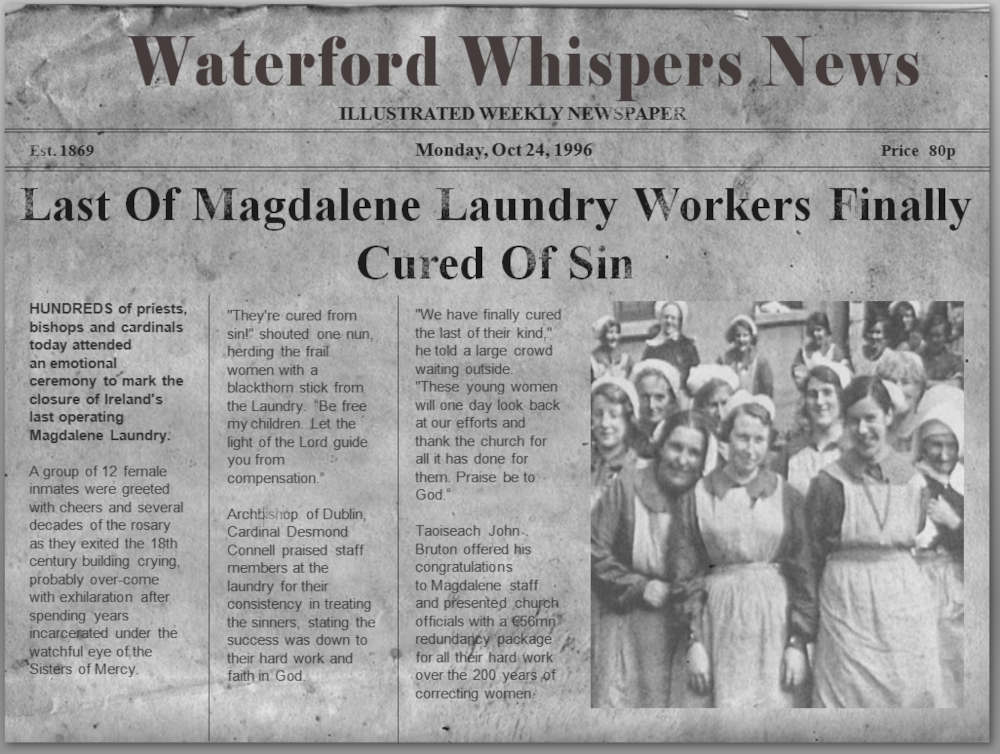
Related Reading: JFMR’s Critique of Chapter 16 of the McAleese Report (PDF format)
Order of the Sisters of the Divine Redeemer
A report outlining decades of rampant child sex abuse at the hands of greedy nuns and perverted priests in the Archdiocese of Cologne, Germany, paints a troubling picture of systematic abuse in the German church. The report is the by-product of a lawsuit alleging that orphaned boys living in the boarding houses of the Order of the Sisters of the Divine Redeemer were sold or loaned for weeks at a time to predatory priests and businessmen in a sick rape trade.
“Sometimes I would run back to the home in blood-smeared clothes, the blood ran down my legs. Before I left in September 1972, I had been sexually abused about a thousand times. But what’s the use of the money? My marriage is broken. My bones, liver, and kidneys are too”.
The men involved in the lawsuit say as boys they were denied being adopted out or sent to foster families because selling them for rape lined the sisters’ coffers for their “convent of horrors.” Some boys were then groomed to be sex slaves to perverts, the report claims. The alleged abuse went on for years, with one of the males claiming the nuns even frequently visited their college dorms after they had left the convent. He said the nuns often drugged him and delivered him to predators’ apartments.
“The nuns earned money from it. The men who were present would have donated generously”.
The lawsuit, first reported by Deutsche Welle last year, is being led by 63-year-old victim Karl Haucke who, along with 15 other former orphans, demanded the Archdiocese of Cologne carry out a full investigation, which it concluded in January 2021. But the details of that investigative report were so horrific that Archbishop Reiner Maria Woelki refused to make it public, demanding that any journalists who see it sign confidentiality agreements. Eight German journalists walked out of a press conference in January after being denied access to the church’s investigation unless they agreed not to publish its contents.
“A girl Haucke had met at a “sex party”, who, at the age of twelve, became pregnant; he tried to help her and went with her to the police and other authorities., but they were accused of lying. One day, the girl disappeared. He found her hanging in the attic. However, he does not believe in suicide. He suspects that the girl knew too much — including the name of the man who made her pregnant”.
Haucke says he was abused at least once a week between the ages of 11 and 14, often by more than one priest. “We had no words to describe what was being done to us. Nor did we know what it meant. And it did not stop at physical pain. We had a clear sense of humiliation and being used,” he told Deutsche Welle when the report was due to be released. He called the stifling of the report's release in January “scandalous” and said that denying the journalists the right to publish the report was “like being abused all over again.”.
Congregation of Our Lady of Charity of the Good Shepherd
The Congregation of Our Lady of Charity of the Good Shepherd, also known as the Sisters of the Good Shepherd, is a Catholic religious order that was founded in 1835 by Mary Euphrasia Pelletier in Angers, France. The religious sisters belong to a Catholic international congregation of religious women dedicated to promoting the “welfare” of women and girls. In several countries, laundries and other institutions that were run by the Sisters have been found to have forced young girls to do industrial work, with much mistreatment.
At the request of the Melbourne bishop James Goold, four sisters, led by Mary of St Joseph Doyle, arrived in Australia in 1863. They established the Abbotsford Convent, and the first women's penitentiary and reform school for girls. From the early 1890s to the 1960s, most Australian state capitals had a Magdalene asylum, also known as Magdalene laundry, a large convent where teenage girls were placed.
The state-run Parramatta Girl's Home, which also had a laundry, had harsh conditions, bland food, hard work, confinement and the long periods of silence. but a worse record for assaults. The Good Shepherds were among the organisations running these institutions and laundries, for example at Abbotsford Convent.
In 2004, the Australian Parliament released a report that included Good Shepherd laundries in Australia for criticism. “We acknowledge” [writes the Australian Province Leader Sister Anne Manning] “that for numbers of women, memories of their time with Good Shepherd are painful. We are deeply sorry for acts of verbal or physical cruelty that occurred: such things should never have taken place in a Good Shepherd facility. The understanding that we have been the cause of suffering is our deep regret as we look back over our history.”.
The Congregation ran institutions which provided residential accommodation for children and adults in Belfast, Derry and Newry in Northern Ireland. These institutions were the subject of the two-week Module 12 of the Northern Ireland Historical Institutional Abuse Inquiry into sexual and physical abuse of children—not taking into account young women over the age of 18, the majority of residents—starting on 7 March 2016. The inquiry, under retired judge Sir Anthony Hart, published its report on 20 January 2017. In regard to the Good Shepherd Sisters facilities in Belfast, Derry and Newry, Hart said there had been “unacceptable practices” of young girls being forced to do industrial work in the laundries.
Hart recommended state-backed compensation of £7,500 to £100,000 per person for victims of historic child abuse in Northern Ireland, with the maximum for those who had experienced severe abuse or been transported to Australia in the controversial Home Children migrant scheme. An apology on behalf of the Sisters said, “We regret that some of our former residents have painful memories of the time spent in our care.”. The Sisters also ran residential institutions in Scotland, and were involved in transportation of children to Australia, as there was a Catholic presence there.
The Ireland branch of the congregation has been accused of labour abuse, with inmates forced by nuns to perform laborious work in laundries and factory-like setups for pocket-money pay for companies such as Hasbro. In Dublin in 1993, the order sold land to property developers in High Park, Drumcondra, that partly included a graveyard containing the mass grave of former inmates of its Magdalene Laundry. After seeking an exhumation order from the authorities to remove 133 bodies from the mass grave, it was found that the grave actually contained 155 bodies.
The Dutch branch of the congregation has been accused of labour abuse, with inmates forced by nuns to perform unpaid labour in laundries and sewing workshops between 1860 and 1973. One of the interviewed victims also mentioned rape, claims on the heritage of orphans to pay for living costs, while performing unpaid labour. Questions have been submitted in parliament; after a dismissive ministerial response, a civil claim in court was announced in 2018 by 19 victims.
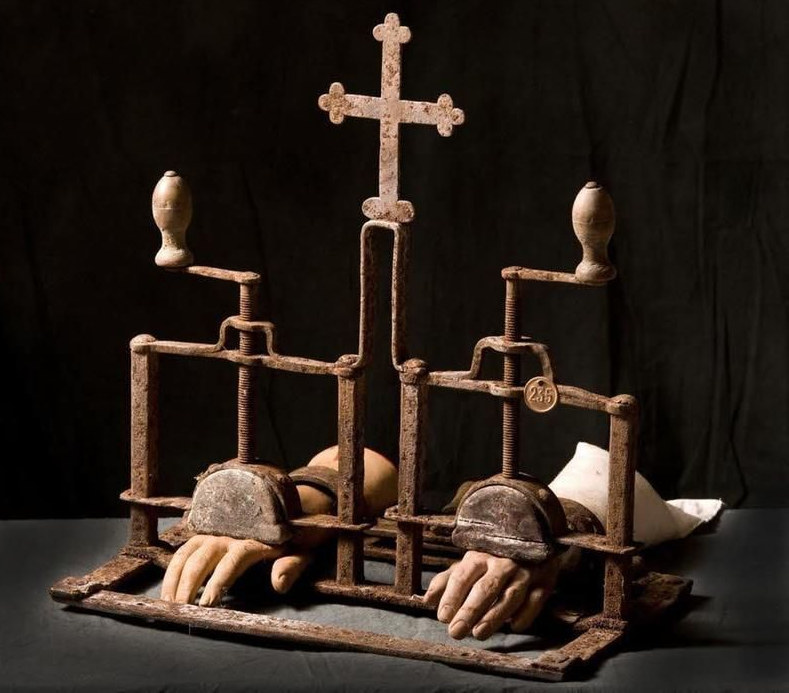
“They came with a Bible and their religion, stole our land, crushed our spirit, and now they tell us we should be thankful to the lord for being saved.”.
